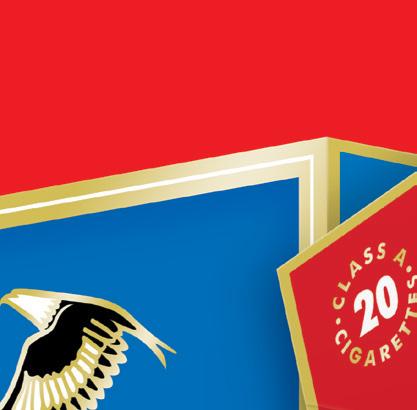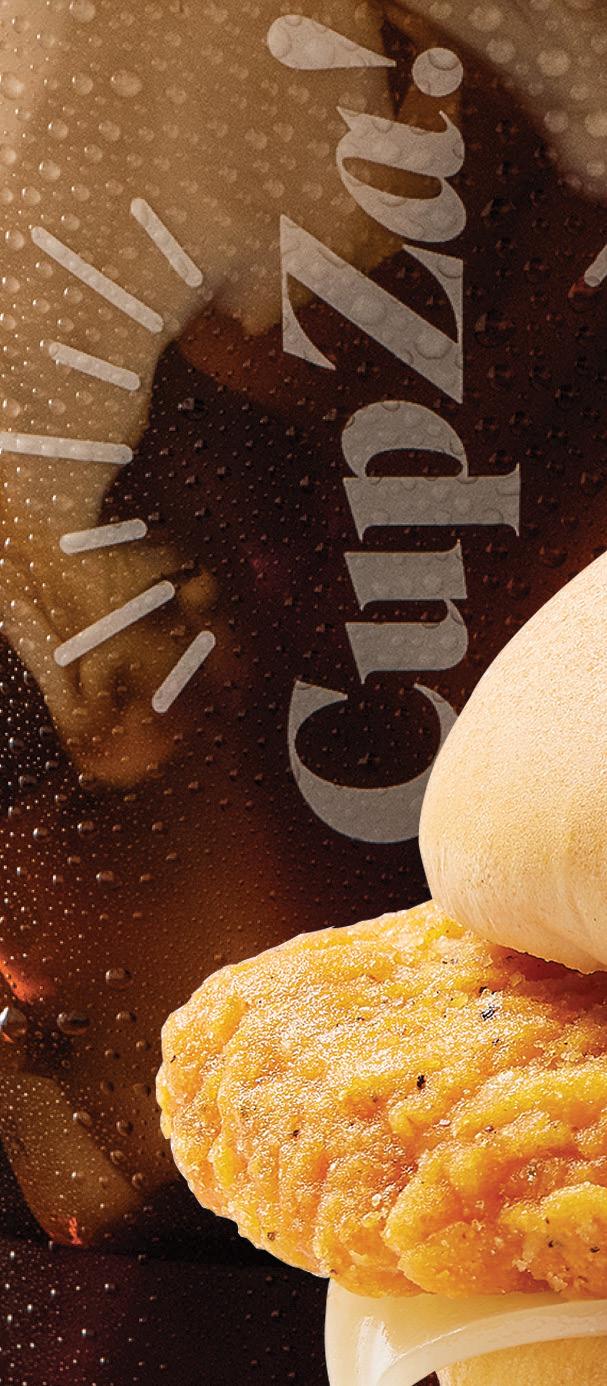A steady foodservice staple, fountain beverage undergoes a refresh.



A steady foodservice staple, fountain beverage undergoes a refresh.





Fresh-baked items (and their scent) can change the perception of a foodservice offer.




C-stores are innovating to attract dinner diners.


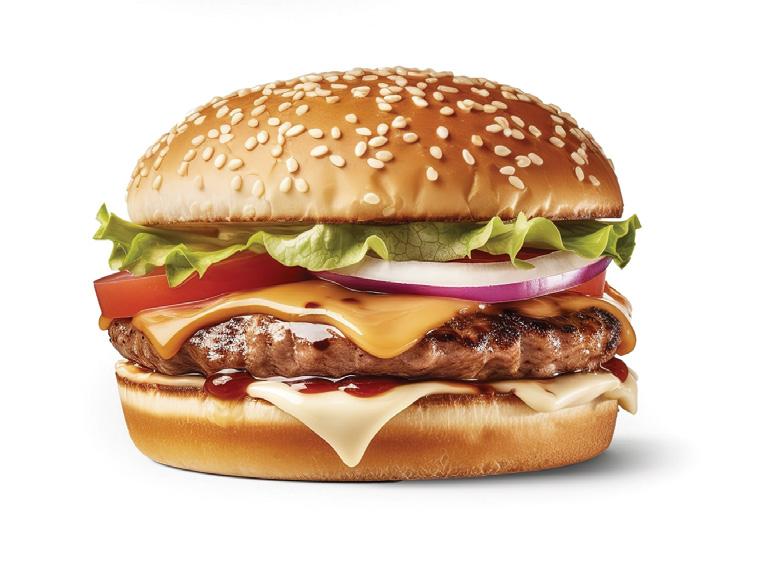

Combined, these companies account for nearly 46,000 stores.
A look at some of the ways technology can reduce labor in the kitchen.
The Case for Bakery Convenience retailers are building out bakery programs, eyeing daylong sales opportunity for baked in-store goods. 56 Stop Foodservice Leakage
C-stores innovate to convince customers who are already in the store to purchase a meal there instead of at the QSR down the street. 62 Protect Your Store

De-escalation techniques, data analysis and understanding risk factors can help make your store more secure. 74 An Inside Look at ‘The 7-Eleven Airport’ At Copenhagen Airport, flyers can’t miss the convenience retailer.
This article is brought to you by Structural Concepts.
Build bigger baskets with merchandising strategies that put better-for-you options front and center.
Subscribe to NACS Daily—an indispensable “quick read” of industry headlines and legislative and regulatory news, along with knowledge and resources from NACS, delivered to your inbox every weekday. Subscribe at www.convenience.org/NACSdaily






EDITORIAL
Jeff Lenard
V.P. Strategic Industry Initiatives (703) 518-4272 jlenard@convenience.org
Ben Nussbaum Editor-in-Chief (703) 518-4248 bnussbaum@convenience.org
Leah Ash Editor/Writer lash@convenience.org
Noelle Riddle Editor/Writer nriddle@conveneince.org
Lauren Shanesy Editor/Writer lshanesy@convenience.org
CONTRIBUTING WRITERS
Terri Allan, Karen Alley, Amanda Baltazar, Sarah Hamaker, Al Hebert, Pat Pape, Emma Tainter
DESIGN
MX www.themxgroup.com
ADVERTISING
Stacey Dodge Advertising Director/ Southeast (703) 518-4211 sdodge@convenience.org
Jennifer Nichols Leidich National Advertising Manager/Northeast (703) 518-4276 jleidich@convenience.org
Ted Asprooth
National Sales Manager/ Midwest, West (703) 518-4277 tasprooth@convenience.org
PUBLISHING
Stephanie Sikorski Vice President, Marketing (703) 518-4231 ssikorski@convenience.org
Nancy Pappas
Marketing Director (703) 518-4290 npappas@convenience.org
Logan Dion Digital Media and Ad Trafficker (703) 864-3600 ldion@convenience.org
CHAIR: Brian Hannasch, Alimentation Couche-Tard Inc.
TREASURER: Annie Gauthier, CFO/Co-CEO, St. Romain Oil Co. LLC
OFFICERS: Varish Goyal, Loop Neighborhood Markets; Lonnie McQuirter, 36 Lyn Refuel Station; Charles McIlvaine, Coen Markets Inc.; Tony Miller, Retail Delek US; Chris Bambury, Bambury Inc.; Missy Matthews, Childers Oil Co.
GENERAL COUNSEL: Doug Kantor, NACS
MEMBERS: Lisa Blalock BP North America Inc.; Tom Brennan, Casey’s; Andrew Clyde, Murphy USA; Terry Gallagher, Gasamat Oil Corp/ Smoker Friendly; Raymond Huff, HJB Convenience Corp. dba Russell’s
NACS SUPPLIER BOARD
SUPPLIER BOARD CHAIR: Vito Maurici, McLane Co. Inc.
CHAIR-ELECT: Bryan Morrow, Chobani & La Colombe
VICE CHAIRS: Kevin LeMoyne, The Coca-Cola Company; Mike Gilroy, Mars Wrigley; Jim Hughes, GALLO
MEMBERS: Tony Battaglia, Tropicana Brands; David Charles, Cash Depot; Brent Cotten, The Hershey Company; Jerry Cutler, InComm Payments; Jack Dickinson, Dover Corporation; Matt Domingo, Reynolds; Mark Falcone, Greenridge Naturals; Kevin Farley, Impact 21; Danielle Holloway, Altria Group Distribution Co.; Kevin Kraft, Tropicana Brands; Sarah Vilim,
Convenience; Mark Jordan, Refuel Operating Co.; Brian McCarthy, Blarney Castle Oil Co.; Natalie Morhous, RaceTrac Inc.; JP Patel, FASTIME; Robert Razowsky, Rmarts LLC; Stanley Reynolds, 7-Eleven Inc.; Kristin Seabrook, Pilot Travel Centers LLC; Travis Sheetz, Sheetz Inc.; Babir Sultan, Fav Trip; Doug Yawberry, Weigel’s Stores Inc., Scott Zietlow, Kwik Trip Inc.
PAST CHAIRS: Victor Paterno, president and CEO of Philippine Seven Corp.; Don Rhoads, president and CEO of The Convenience Group LLC.
SUPPLIER BOARD REPRESENTATIVES: Vito Maurici, McLane; Brian Morrow, Chobani & La Colombe
Keurig Dr Pepper; Jay Nelson, Excel Tire Gauge; Nick Paich, GSTV; Ramona Giderof, Diageo Beer; Ryan Calong, Pabst; Jordan Nicgor
GENERAL COUNSEL: Doug Kantor, NACS STAFF LIAISON: Bob Hughes, NACS
RETAIL BOARD REPRESENTATIVES: Tom Brennan, Casey’s; Scott Hartman, Rutter’s; Kevin Smartt, TXB
PAST CHAIRS: David Charles, Cash Depot; Brent Cotton, The Hershey Company; Kevin Farley, Impact 21
NACS Magazine (ISSN 1939-4780) is published monthly by the National Association of Convenience Stores (NACS), Alexandria, Virginia, USA.
Subscriptions are included in the dues paid by NACS member companies. Subscriptions are also available to qualified recipients. The publisher reserves the right to limit the number of free subscriptions and to set related qualifications criteria.
Subscription requests: nacsmagazine@convenience.org
POSTMASTER: Send address changes to NACS Magazine, 1600 Duke Street, Alexandria, VA, 22314-2792 USA.
Contents © 2025 by the National Association of Convenience Stores. Periodicals postage paid at Alexandria VA and additional mailing offices. 1600 Duke Street, Alexandria, VA 22314-2792


C-stores offer exponentially more options for breakfast, lunch and dinner than a QSR.
When I’m traveling, I much prefer stopping at a food-forward c-store to a QSR.
There are a lot of reasons, but the main one is that at a c-store, I have a better shopping experience. There are more options. Not sure what you want? You can check out the menu … then walk over to the roller grill … then see if grab-and-go looks tempting. Maybe you decide you want to combine a few snacks.
Especially as mealtimes get scrambled and people aren’t on a shared breakfast-lunch-dinner schedule, if I have multiple people in the car, a c-store is a far better choice. Person A may want a full meal, person B may want a yogurt and a bag of chips for later, and person C may opt for juice and a bakery item.

Ben Nussbaum Editor-in-Chief
Of course, people in the industry already know that c-stores are great places to stop and shop, but the consumer is still figuring it out. I know that firsthand from when I have to twist someone’s arm to get them to try “gas station food.” (They’re inevitably impressed afterwards.)
My two cents: The industry can do a better job telling the story of how c-stores have so many more choices than a QSR. For example: At my local c-store, a quick, unofficial count revealed 22
juice options and 42 meat snack options. Even if a customer only wants juice and beef jerky, that’s 924 combinations to choose from. A customer could mix and match and try a new combination every week … for almost 18 years.
For this issue I thought it would be fun to count the options more scientifically, with help from the NACS research team and our partners at NIQ. You can see the results on page 59. It’s part of a story on foodservice leakage, which NACS defines as when customers leave your store with plans to visit a QSR within the next half hour.
Other foodservice content in this issue includes a look at the dinner daypart—a huge growth opportunity for c-stores— and what experts suggest for growing your share; new innovations in foodservice equipment; trends in bakery; and an article on the c-store staple of cold dispensed and how retailers are freshening the offer.
Inside NACS we’re gearing up for our annual State of the Industry Summit, where you’ll be the first to hear how foodservice is performing in our industry, as well as many, many other trends and watchouts. This year’s event is in Dallas April 8-10. Register at convenience.org/SOISummit



the people who make our industry great.
Five years ago, Andrew Cairl was working in the entertainment industry as a wedding DJ, photographer and videographer. He was booked on the weekends, but “I needed something stable during the week to keep the bills paid,” he said. He applied to the Casey’s across the street from his apartment in Waite Park, Minnesota. “I never would have imagined then what it’s become now.”
Cairl has held several roles as he has grown in his career at Casey’s and is now a district manager. A major accomplishment in his tenure was competing in the company’s most recent pizza competition, where he created a pizza that was a tribute to the pickle wrap—pickles wrapped in cream cheese and ham, a popular appetizer in parts of the Midwest.
His pickle wrap-inspired pizza appeared as an LTO menu item in Casey’s locations in Minnesota and northern Iowa last fall.
He spoke with NACS about:

I love being in front of people and getting to engage with them. When you’re in a convenience store, you have a lot of regulars. There are a lot of people that depend on your store and rely on you for
the important parts of their day-to-day life. You get an intimate opportunity to connect with the community around you, and you don’t get that in a lot of other jobs, even in similar retail jobs.
I wanted to do something to represent Minnesota and the Midwest that had
a hometown feel. We kicked around a lot of ideas but narrowed it down to four pickle-focused recipes and let employees in some of our stores taste test them. The pickle wrap won every time. I also wanted to make sure the pizza was simple to build and didn’t stress team members out to make. What our team members want to eat and make translates to the guest—if the team is happy to be making the product, the guest is going to get a better product too.
When I was contacted about putting my pizza on the menu, that was a special moment. I was really honored. It was another thing that helped me feel like what I do for Casey’s matters.
There are so many different opportunities within the convenience world. It’s not just a straight ladder to climb. There are sidesteps in different areas of expertise or departments—there is something for everybody.
Part of what keeps it fresh is how challenging it can be at times. There is a lot going on but I enjoy a challenge and that is what keeps a job from getting stale, right? In convenience, the possibilities are endless.
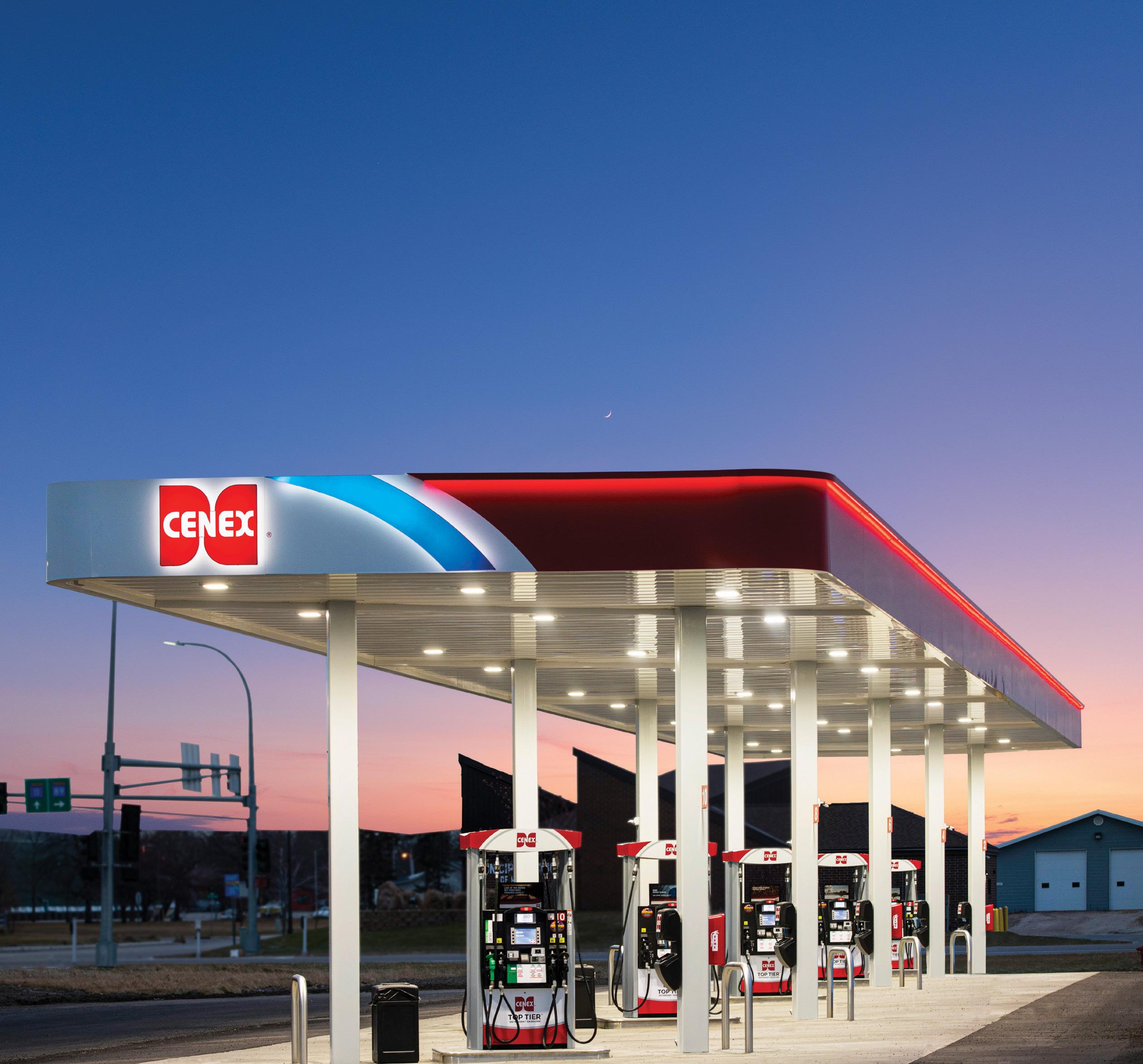



January was National Human Trafficking Prevention Month and NACS actively supported the efforts of its partners who are engaged in this effort.
NACS Vice President of Media and Strategic Communications Jeff Lenard was invited to be a panelist at the U.S. Department of Homeland Security (DHS) Center for Countering Human Trafficking (CCHT) Anti-Trafficking Symposium in Arlington, Virginia. The meeting brought together leaders from numerous national and regional groups that are actively addressing human trafficking.
NACS currently works with multiple groups that fight human trafficking— including DHS, National Safe Place Network, Truckers Against Trafficking, In Our Backyard/Convenience Stores Against Trafficking and the National Center for Missing & Exploited Children—and it was clear from the Q&A that more want to engage with the c-store industry.
Human trafficking is the second fastest growing crime in the world (behind only illicit drug sales) yet “it hides in plain sight,” said CCHT Director James Harris. Human trafficking relies on inaction by bystanders, and collaboration,


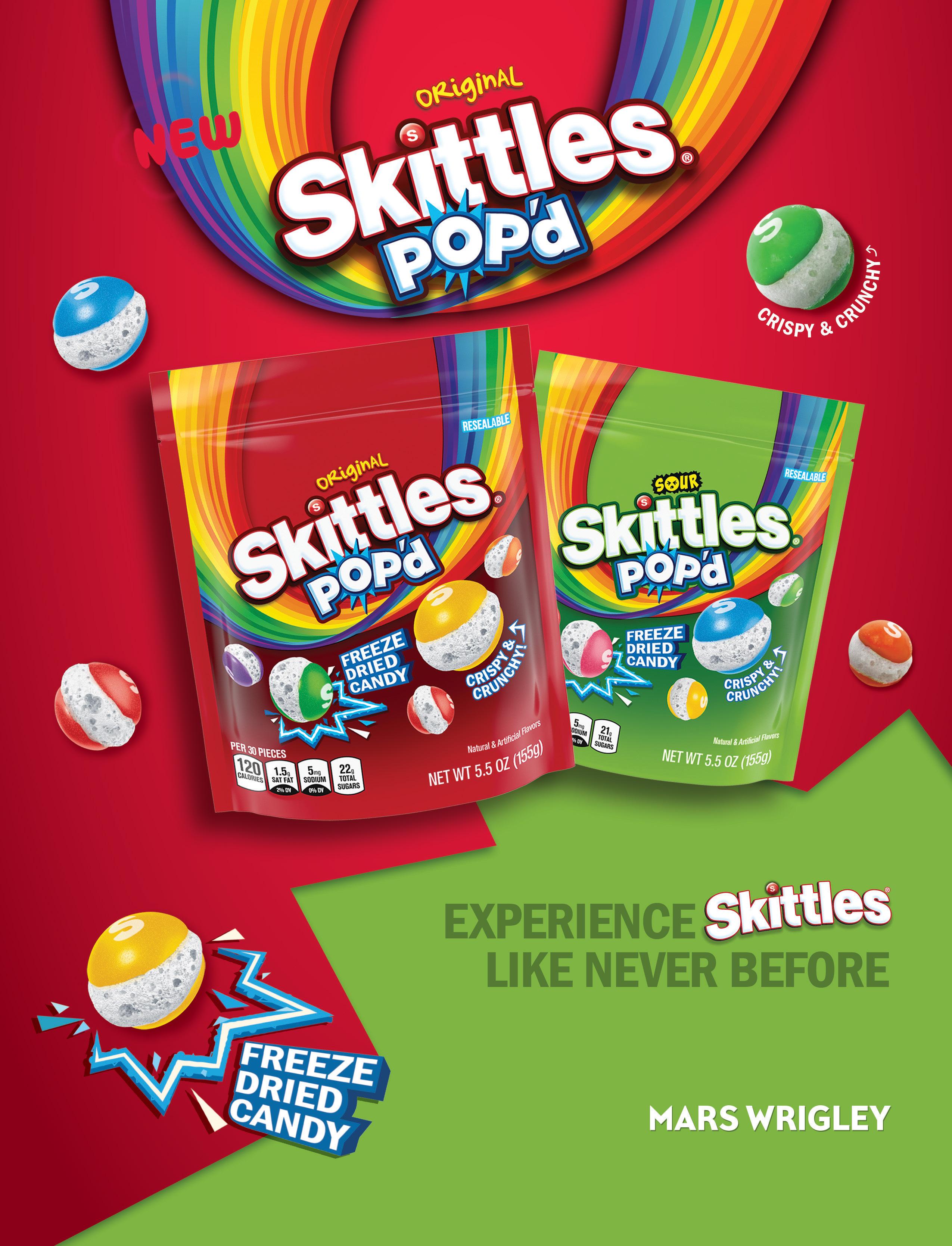



More than 30,000 convenience stores display CSAT’s “Freedom Stickers” in bathrooms that showcase the National Human Trafficking Hotline. A fuel truck for Virginia-based Petroleum Marketing Group has extended the message from stores to the street. Smaller stickers can be ordered for free at inourbackyard.org
training and awareness is essential in the fight against trafficking.
“Human trafficking has no place in a country that values freedom and the rule of law,” added CCHT’s Cara Rose.
During the panel discussion, Lenard and representatives from G6/ Motel 6 and the Office of the Iowa Secretary of State shared how they developed programs for prevention as well as what pitfalls to avoid.
Later in the month, Lenard and representatives from BP, Travel Centers of America and Truckers Against Trafficking joined Convenience Stores Against Trafficking (CSAT) in New Orleans for its annual pre-Super Bowl outreach to raise awareness of human trafficking. To learn more or get involved, go to convenience.org/topics/human-trafficking or contact Lenard at jlenard@convenience.org.
APRIL
NACS State of the Industry Summit
April 08-10 | Hyatt Regency
DFW International Airport
Dallas, Texas
NACS Food Safety Forum
April 8 | Hyatt Regency
DFW International Airport Dallas, Texas
MAY
NACS Leadership for Success
May 12-16 | Hershey Lodge Hershey, Pennsylvania
NACS Convenience Summit Europe
May 27-29 | Copenhagen Marriott Copenhagen, Denmark
JULY
NACS Financial Leadership Program at Wharton
July 13-18 | The Wharton School, University of Pennsylvania Philadelphia, Pennsylvania
NACS Marketing Leadership Program at Kellogg
July 20-25 | Kellogg School of Management, Northwestern University Evanston, Illinois
This year, NACS honored 10 Master of Convenience recipients at the invitation-only NACS Leadership Forum, held February 11-13 in Amelia Island, Florida.
The NACS Master of Convenience designation celebrates leaders from around the world who have attended three or more NACS Executive Education programs and invested in their professional development and education.
This year’s recipients are:
• Duncan Stoops, Love’s Travel Stops
• Holly Luke, Love’s Travel Stops
• Steve Robertson, Love’s Travel Stops
• Tony Cribb, Love’s Travel Stops
• JJ Tellez, NIQ
• Sugey Calderón, AMPM CentroAmerica
• Tomás Alonso Sánchez, AMPM CentroAmerica
• Kristin Ghere, Jump Start Stores Inc.
• Lonnie McQuirter, 36 Lyn Refuel Station
• Marie Wise, Imperial Trading Company
AUGUST
NACS Executive Leadership Program at Cornell
August 03-07 | Dyson School, Cornell University Ithaca, New York
OCTOBER
NACS Show
October 14-17 | McCormick Place Convention Center Chicago, Illinois








































































































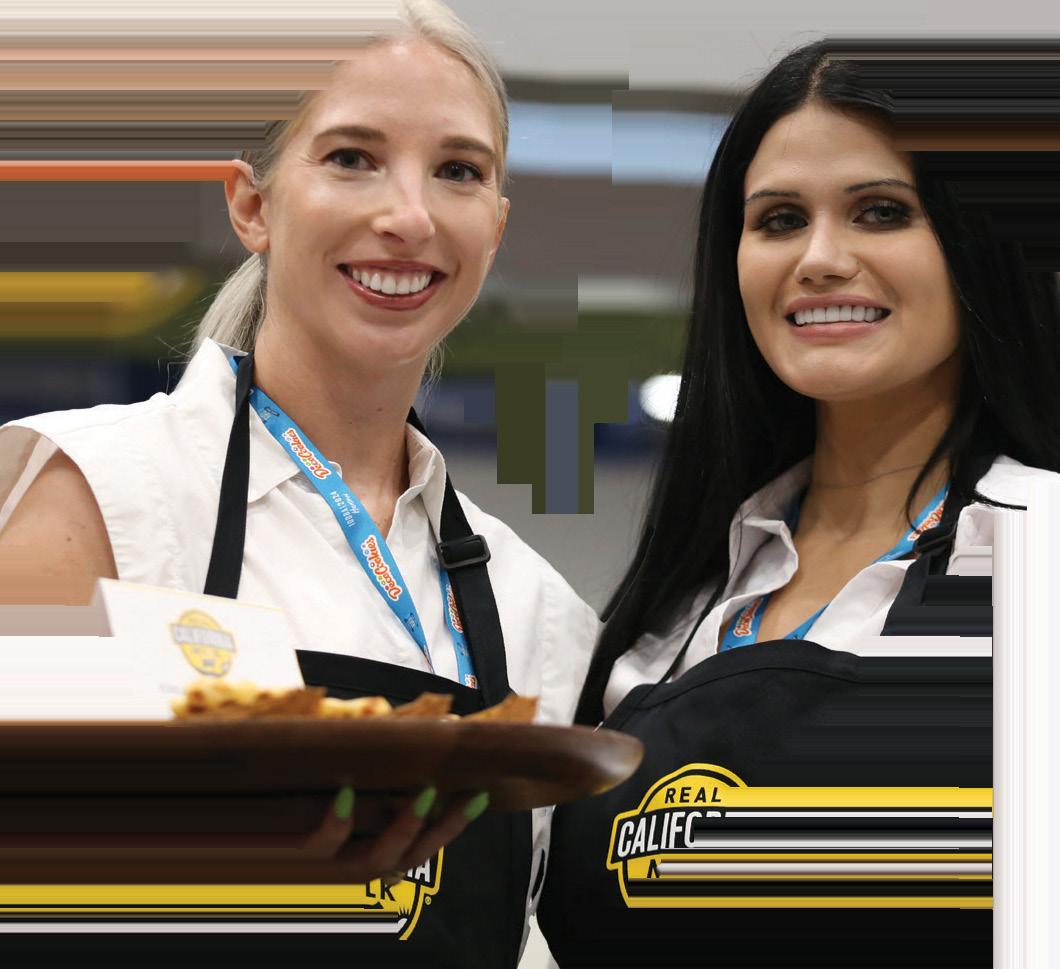





Stephanie Sikorski has been appointed NACS vice president of strategic initiatives and CEO of TruAge. In this newly developed role, Sikorski will oversee the advancement and growth of new industry-wide initiatives across NACS, which currently supports a growing portfolio of solutions, services and companies like TruAge, THRIVR, PROSPR and the TEI EV Charging Analytics Program.
TruAge is a digital age verification tool that seeks to be “the universal form of digital age verification that protects retailers and provides the most convenient and privacy-minded method for consumers,” said Sikorski. The technology anonymizes a consumer’s information and, when scanned at the point of sale, verifies that their credentials are valid, confirms the customer is of age and logs proof that the verification took place by appending to the transaction log.
“When we first started this effort, we needed to protect our underlying base business. Youth vape risk was up, product bans were on the rise and our social license to sell was at risk,” said Sikorski. “As the single-largest channel for the sale of age-restricted products, we can be recognized as the experts. That’s motivating. It’s not only tech for good; it’s truly putting into practice what NACS has committed to do: advance convenience and fuel retailing ... and I would add: for the greater good.”
“We’re not just a technology solution. We’re a non-profit that’s committed to safely and simply keeping age-restricted products out of the hands of minors,” she said.
For more information about TruAge and NACS’ other strategic initiatives, reach out to Sikorski at ssikorski@convenience.org

Gate Petroleum Company announced Misty Jackson Skipper has been promoted to its newly created role of chief strategy officer. She previously served as vice president overseeing marketing, external affairs and merchandising. In her new role, Skipper is responsible for leading the development and execution of strategies across the company’s multiple business divisions, ensuring sustainable growth and profitability, operational efficiency and competitive positioning. She will oversee corporate initiatives and special projects that require cross-functional collaboration as well as crisis management and disaster recovery efforts.

John Cockerham has been promoted to Gate Petroleum Company’s senior vice president of operations and merchandising. He previously served as vice president of operations. Cockerham, in addition to continued oversight of the company’s convenience store operations across Florida and its food service activities, will also now provide leadership for category management, pricing and inventory management and internal distribution center teams.

Wills Group, parent company of Dash In convenience stores and Splash In car washes, announced the appointment of Thomas Rachubinski to chief financial officer (CFO) and executive vice president (EVP) of finance and administration.
Rachubinski brings more than 20 years of financial leadership experience to the role, having worked across the convenience retail industry. Rachubinski joins Wills Group from Wawa, where he played an integral role in driving the company’s growth during his 16-year tenure. Most recently, he served as senior director of finance and corporate controller, leading Wawa’s Enterprise Productivity Team, focusing on cost optimization.

Krispy Krunchy Chicken appointed Jim Zielke as its chief financial officer. Zielke will report to chief executive officer Jim Norberg and will serve on the executive leadership team.
Zielke most recently served as the chief financial officer for the Peruvian-inspired restaurant brand Viva Chicken Holdings LLC where he oversaw finance, human resources, legal and IT departments for the company. He brings over 30 years of experience in the industry.

The Hershey Company announced that Michele Buck , chairman of its board of directors, president and chief executive officer will retire from the company effective June 30, 2026. Buck will continue to serve in her existing roles until her successor is appointed, at which time she plans to resign from the board and transition to a senior advisor role until her retirement.
Hershey has appointed a special committee to direct the search for the company’s next CEO and will consider external and internal candidates, in partnership with a nationally recognized search firm.

Andrew Archambault was named president, U.S. confection at The Hershey Company. He will oversee a portfolio of brands including Hershey’s, Reese’s and Jolly Rancher. He brings experience from Keurig Dr Pepper (KDP), where he was instrumental in evolving wellknown brands, including Dr Pepper, Canada Dry, Core Water and Motts, to deliver results at scale. Most recently, as president, U.S. refreshment beverages, Archambault rapidly grew the business and positioned KDP for the longterm through strategic acquisitions and partnerships.

The Hershey Company promoted Veronica Villasenor to president, salty snacks. She previously served as vice president of salty snacks and brings a unique perspective from her roles in management, marketing and innovation from across Hershey’s three business units—salty snacks, confection and international.
















NACS welcomes the following companies that joined the Association in December 2024. NACS membership is company-wide, so we encourage employees of member companies to create a username by visiting convenience.org/ create-login . All members receive access to the NACS Online Membership directory and the latest industry news, information and resources. For more information about NACS membership, visit convenience.org/membership
NACS HUNTER CLUB
BRONZE
Blue Yonder Scottsdale, AZ blueyonder.com
PAR Retail Philadelphia, PA www.parretail.com
The Middleby Corporation Elgin, IL www.middleby.com
Ultimate Sales and Services Savannah, GA thebestcstorebroker.com
InStore.ai Los Gatos, CA www.instore.ai
RETAILERS
Ewing Oil LLC Grand Forks, ND ewingoilcstores.com
Homax Oil Sales Inc. Casper, WY
Native Pride Travel Plaza Irving, NY www.nativepride.com
Wright’s Markets Inc. Opelika, AL www.wrightsmarkets.com
SUPPLIERS
3 Tier Beverages Chicago, IL
AQUA Management Services LLC Troy, MI aquamanagementservices.com
Beef Cake Jerky Valley, NE duxbux.com
Bond Bakery Brands Toronto, Ontario, Canada www.bondbakerybrands.com
Boomin Brands Norcross, GA
BranchOut Food - Sucursal Peru Bend, OR
Broaster Company Beloit, WI www.broaster.com
CITAQ Co. Ltd Shantou, Guangdong, China www.citaqpos.com
FRSH Scents
Tangmere, West Sussex, United Kingdom
FWE / Food Warming Equipment Co. Crystal Lake, IL www.fwe.com
GVision-USA, Inc. Rancho Santa Margarita, CA www.gvision-usa.com
Jubi Brands LLC Bedford Hills, NY drinkjubi.com
Kleos Brands Spring, TX www.kleosbrands.com
Pacific Gold Beverage Corp. drinkgoldsoda.com
Plantain Products Miami, FL chifleschips.com
Print It Big Earth City, MO printitbig.com
ProxyPics Chicago, IL
Rinsed New York, NY
Spider Factory Calgary, Alberta, Canada spiderfactory.ca
Sunburst Chemicals Bloomington, MN
SunTree Snack Foods Phoenix, AZ www.suntreesnackfoods.com
Tea Aroma Inc. dba Beyond Nature Carson, CA
The Junkluggers Seymour, CT www.junkluggers.com
Trefethen Advisors LLC Scottsdale, AZ www.trefethenadvisors.com
VerMints Inc. Braintree, MA www.vermints.com
VidCruiter Moncton, New Brunswick, Canada vidcruiter.com
Water Wipes Portsmouth, NH www.waterwipes.com
XLNT Foods Division of Santa Fe Importers Inc. Long Beach, CA www.xlntfoods.com
Yummy Industries LLC Riverbank, CA cheese-bits.com
MAJOR OIL
Motiva Enterprises Houston, TX motiva.com




The retailer’s fall fundraiser included a round-up campaign at the register and specialty fountain cups.
OnCue raised $275,000 for St. Jude Children’s Research Hospital through its fall fundraiser, bringing the partnership total to more than $3.8 million raised over 17 years. “OnCue’s gift will help ensure families being treated by St. Jude never receive a bill from the hospital and give patients the chance to focus on what’s most important,” OnCue said.
During the month of October, OnCue “connected its customers to the cause through pinup sales, rounding change at the register and specialty fountain cups. Through pinup sales, OnCue team members had additional opportunities to show off their St. Jude support through ‘Dress as a Superhero Day.’”
At the start of the year’s efforts, OnCue managers heard from Edmond, Oklahoma, residents Penelope and her
mother Megan, who are a St. Jude patient family. Megan shared an emotional story about how the hospital changed their lives—thanks to the quick actions of the doctors, Penelope was able to keep her eyesight in both eyes and start further treatments.
“As a parent, our St. Jude fundraiser means so much to me. Having visited the hospital twice and hearing from families like Penelope’s, I am reminded how important this work is and how many are impacted by cancer,” said Laura Aufleger, OnCue president. “The way they care for patients like Penelope is one of a kind, and we are fortunate to be able to contribute to this life-saving mission.”
Along with in-store efforts, OnCue hosted its annual golf tournament for its business partners. OnCue also put on its St. Jude Walk with friends and family.
Every year, the convenience retail industry dedicates billions of dollars to advancing the futures of individuals and families in our communities. The NACS Foundation unifies and builds on NACS members’ charitable efforts to amplify their work in communities across America and to share these powerful stories.
Learn more at www.conveniencecares.org
GPM Investments LLC held its MDA Holiday Retail Campaign in December, a fundraiser to support the Muscular Dystrophy Association’s (MDA) mission.
The campaign ran from December 1 through December 31, 2024, at approximately 1,500 locations and in 27 states across the United States. Customers could purchase a $1 or $5 pinup or round up their purchase, with proceeds going to MDA.

1












In honor of Giving Tuesday, Pilot said it “is funding scholarships for the next generation of professional truck drivers,” with a $50,000 donation to Folds of Honor, a nonprofit organization that provides educational scholarships to the spouses and children of military members and first responders who have fallen or been disabled while serving their country and communities.
The funds will go toward scholarships for qualified recipients looking to earn their commercial driver’s license. The $50,000 donation will provide Folds of Honor with resources to further support the education of the spouses and children of fallen or disabled military personnel and first responders across the country.
Maverik and Kum & Go (K&G) “rang in the Giving Season” with their annual Round Up Your Change campaign to support Feeding America. Between October 23 and December 4, the


retailers “raised over $520,000 through the generosity of customers rounding up cash and credit transactions across their combined 20-state operating footprint.”
The campaign expanded Maverik’s $1 million direct donation in August, bringing its total contribution for the year to over $1.52 million.
Rutter’s Children’s Charities contributed $100,000 through Rutter’s annual Secret Santa initiative, which gives employees the opportunity to donate to charitable causes of their choice. Rutter’s employees chose charities that focus on children’s education, food insecurity, healthcare and family support services.
In its eighth year, the program has donated a total of $550,000 to employees’ causes of choice.
Weigel’s participated in a “poignant tribute” at the Chattanooga

National Cemetery in Tennessee during the holiday season, helping to place memorial wreaths on over 64,000 veterans’ graves. Weigel’s team members contributed wreaths through Wreaths Across Chattanooga.
“By placing these wreaths, we hope to honor their memory and inspire others to remember the values of service and courage that unite us as a community,” said Kurt Weigel.
Circle K partnered with Feeding America to “donate over 1.4 million sandwiches, burgers and burritos among other items to affiliated food banks and food pantries.” The retailer worked with the Feeding America network of local food banks and partner agencies throughout December to distribute the donation.
“Families feel an extra burden this time of year as they balance their everyday household and food costs with added holiday expenses, and they should not have to choose,” said Mette Uglebjerg, Circle K’s senior vice president of global food and marketing.


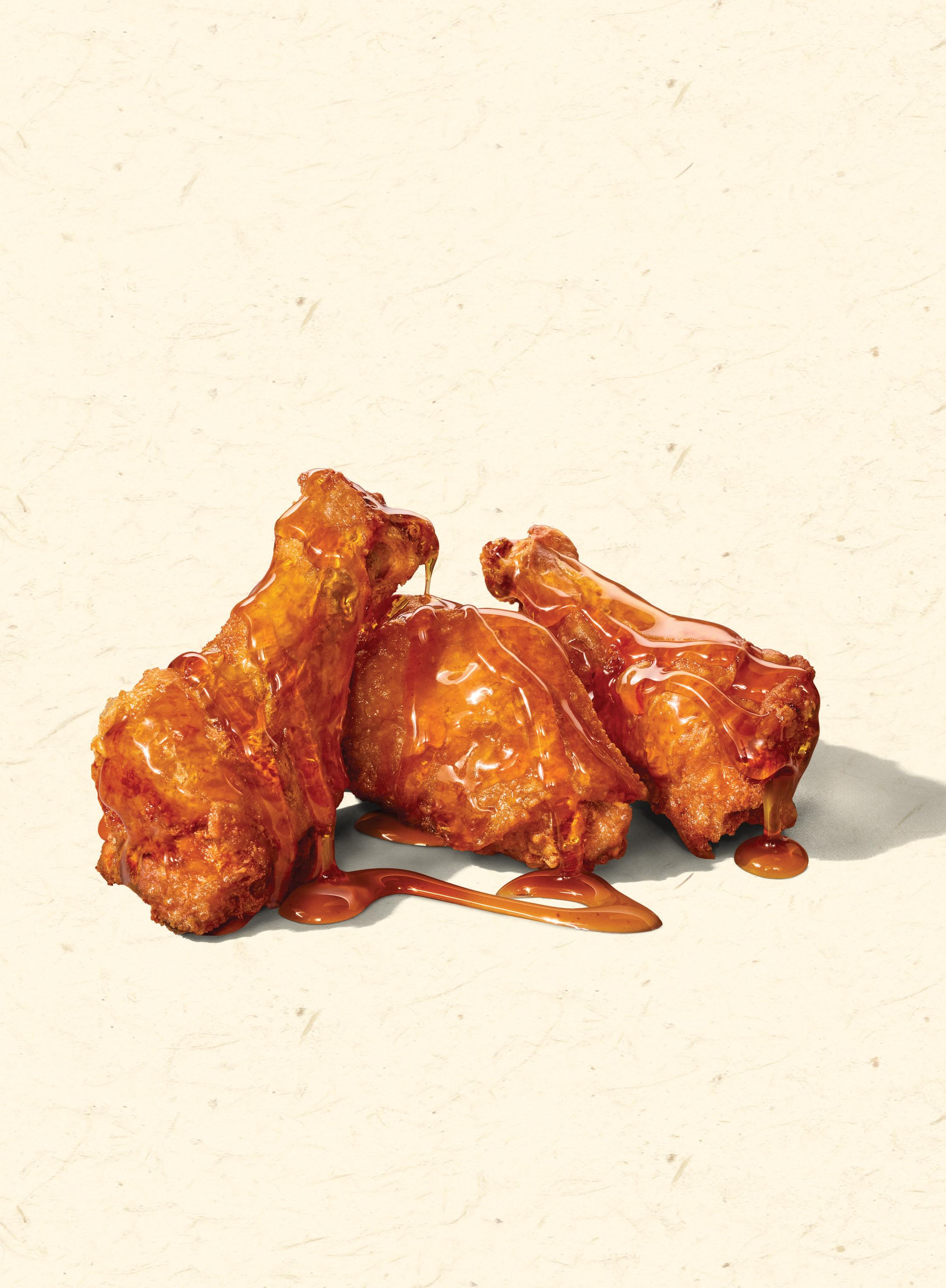


From testifying in the House to legislative progress, 2024 was a strong year for NACS and the industry.
BY THE NACS GOVERNMENT RELATIONS TEAM
Despite what could accurately be described as an often chaotic year on Capitol Hill, 2024 was a productive one for the convenience retailing industry. NACS and our members made significant progress on key industry issues during the year.
We advanced important legislation, impacted key regulatory activity, saw NACS members and staff testify before Congress and won some important court decisions during those 12 months.
During the second week of April, Ray Huff, NACS board member and president of HJB Convenience, came to Washington to testify before the House Small Business Committee on the impact on his business of the Tax Cuts and Jobs Act, particularly focusing on the business income deduction for passthrough entities.
That same week, NACS board members Don Rhoads, president/CEO of the
Convenience Group LLC, and Annie Gauthier, CFO/Co-CEO of St. Romain Oil Company, joined NACS staff in a virtual meeting with staff from the Office of Management and Budget (OMB) and U.S. Department of Labor (DOL) to discuss the potential impact of the DOL’s proposed overtime rule. They informed the government staff about how the proposal would negatively impact the very workers the agency sought to help and the businesses that employ them. More on that overtime rule later in the article.
In November, Doug Kantor, NACS general counsel, was invited to testify before the Senate Judiciary Committee to discuss the benefits of the Credit Card Competition Act. Kantor testified alongside senior executives from Visa and Mastercard, as well as the owner of a small bookstore in New York and a law professor from the University of Notre Dame. Kantor also testified earlier in the year before a state study committee in Georgia on why that state should prohibit swipe fees on sales taxes.

NACS saw significant progress and wins on important legislation as well. Much of that success was driven by the strength of our industry’s grassroots efforts. During the year, industry advocates sent over 14,000 messages to Capitol Hill on issues that impact convenience retailers, like swipe fees, taxes and SNAP. Nearly 200 advocates came to Washington, D.C., in March for Day on the Hill, attending over 200 meetings with legislators and staff. NACS also hosted 11 NACS In Store events, bringing members of Congress into their local convenience store for a behind-the-scenes tour and a chance to assist customers from behind the counter. Without these strong grassroots efforts, many of the industry’s legislative accomplishments may not have been possible.

Support for the Credit Card Competition Act grew in 2024, adding two new bipartisan co-sponsors in the Senate and one new co-sponsor in the House. As previously mentioned, the Senate Judiciary Committee held an important hearing on the issue, highlighting how the Credit Card Competition Act would deliver much-needed relief to Main Street businesses and their customers. These developments, along with the strong grassroots efforts in support of the CCCA, have provided momentum to the effort in the new Congress.
Our industry also overcame resistance to legislation allowing for the year-round sale of E15 fuel. Such legislation was included in the original end-ofyear agreement before President Trump and his allies derailed that legislation for unrelated reasons. We also saw legislation introduced to extend the biodiesel
blender’s tax credit by one year. We saw 12 additional bipartisan co-sponsors join the Hot Foods Act and secured bipartisan support for the legislation during the House Farm Bill mark up. Language was secured in the Agriculture Appropriations Bill to delay the FDA’s burdensome Food Traceability Rule, and legislation was also introduced that would exempt retailers from the rule’s requirements.
We also helped move legislation through the House Transportation and Infrastructure Committee to create a pilot program to test raising trucking weight limits to help alleviate supply chain issues. Language was also secured in the agriculture funding bill which would have prevented the FDA from moving forward on efforts to ban menthol cigarettes and limit nicotine content in cigarettes, as well as require that
agency to provide lists of which vapor products retailers can and cannot sell.
Harmful legislation was also stopped through industry efforts, as we halted legislation that would have allowed electric vehicle chargers at rest areas. Legislation was also blocked that would have created pilot programs to test restricting what SNAP customers could purchase with their SNAP benefits. In large part due to NACS grassroots and grass tops efforts, legislation was also blocked that would have instituted 2016-era SNAP stocking requirements for small-format retailers, which would have essentially removed all c-stores from the program. Legislative efforts to impose new privacy and data security laws that would have created significant new liabilities for Main Street businesses were stopped as well.
The industry saw some wins at the regulatory level as well during 2024. Notably, the industry successfully urged DOJ to take action against Visa for its anticompetitive practices. Additionally, an emergency waiver from EPA allowing the sale of E15 fuel was obtained for the summer months, as were waivers of hours of service and vehicle weight limit restrictions, which aided in the recovery from multiple hurricanes. Industry representatives mobilized to block an effort to have the National Fire Protection Association pass emergency standards limiting the ability to install EV charging stations at motor fuel outlets.
Finally, our industry was also very successful in court in 2024. As a result of a significant grassroots letter campaign, the judge overseeing the woefully insufficient Visa-Mastercard swipe fee settlement rejected the proposal. In the judge’s written opinion, she noted many of the comment letters from our members. NACS was also a direct party to legal challenges that invalidated both the previously mentioned DOL overtime
rule and the National Labor Relations Board’s joint-employer rule. Both regulations would have been harmful to the industry. NACS also filed an amicus brief on behalf of our members in support of NFIB’s lawsuit challenging the Beneficial Ownership Information Disclosure Requirements in the Corporate Transparency Act. After some back and forth, the 5th Circuit Court of Appeals upheld a nationwide injunction against that rule in December. The U.S. Supreme Court also granted the petition filed by NACS and its coalition partners in a case challenging the EPA’s grant of a waiver to California for its Advanced Clean Cars Rule.
In addition to the wins noted above, NACSPAC had a banner year in 2024 as well. NACSPAC donors contributed a record amount of $810,373, which is used to support candidates for federal office who are supportive of our industry.
NACSPAC was created in 1979 by NACS as the entity through which the association can legally contribute funds to political candidates supportive of our industry’s issues. For more information about NACSPAC and how political action committees (PACs) work, go to www.convenience.org/nacspac. NACSPAC donors who made contributions in January 2025 are:
Arch Aplin Buc-ee’s Ltd.
Henry Armour NACS
Amy Ashley-Burke NACS
Ted Asprooth NACS
Laura Beck NACS
Lyle Beckwith NACS
Shawn Bhagat American Energy Lifestyle Products LLC
Chrissy Blasinsky NACS
Jayme Gough NACS
Jessica Hayman NACS
Bob Hughes NACS
Doug Kantor NACS
Brian Kimmel NACS
KC Kingsbury NACS
Jack Kofdarali J&T Management
Alicia Landrum NACS
Jay Lee NACS
None of the above could have been accomplished without the active participation of the individuals who make up this industry. Our true influence in Washington is derived from you, the people who work and run the stores that make up the convenience retailing industry and our supplier partners. The most impactful number in the preceding article is the 14,326 messages sent to Capitol Hill during 2024. When you make your voice directly heard in Washington, it has a truly significant impact. The NACS government relations team would like to thank all those who responded to calls to action last year and encourage everyone reading this to respond to future calls to action that will be sent out during the coming months. With your support we can accomplish just as much, if not more, in 2025.
Anna Blom NACS
Katie Bohny NACS
Jeff Burrell NACS
Jenna Collard NACS
Michael Davis
MichaelAngelo’s & More
Stacey Dodge NACS
Matt Durand NACS
John Eichberger NACS
Jennifer Leidich NACS
Kevin LeMoyne The Coca-Cola Company
Margaret Mannion NACS
Brandi Mauro NACS
Jeff McQuilkin NACS
Laura Miller NACS
Brendan Moyer NACS
Jay Nelson Excel Tire Gauge LLC
Ben Nussbaum NACS
Kevin O’Connell NACS
Nancy Pappas NACS
Kaitlin Payne NACS
Chris Rapanick NACS
Navjot Sandhu NACS
Stephanie Sikorski NACS
Doug Spencer NACS
Lori Stillman NACS
Jon Taets NACS
Daniel Trotzer GSTV
TJ Velasco NACS
Nicole Walbe NACS
Leigh Walls NACS
Don Wasek Buc-ee’s Ltd.
Laura Wentling Ready Training Online - RTO


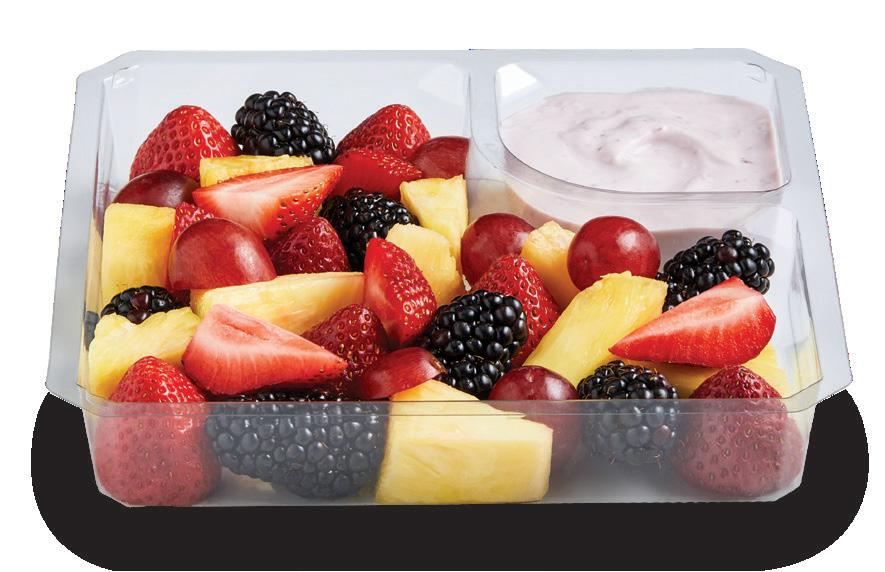
For easy, sustainable grab-and-go solutions, Placon’s Fresh ‘n Clear® Bowls, Trays, and GoCubes deliver. Made from our EcoStar® post-consumer recycled PET, these durable containers with anti-fog lids ensure clear visibility and freshness while keeping food secure. From snacks to party-sized salads, Placon makes it easy for customers to see, grab, and go—without sacrificing quality or the environment. Visit Placon.com to learn more about our full lines of grab and go packaging solutions.

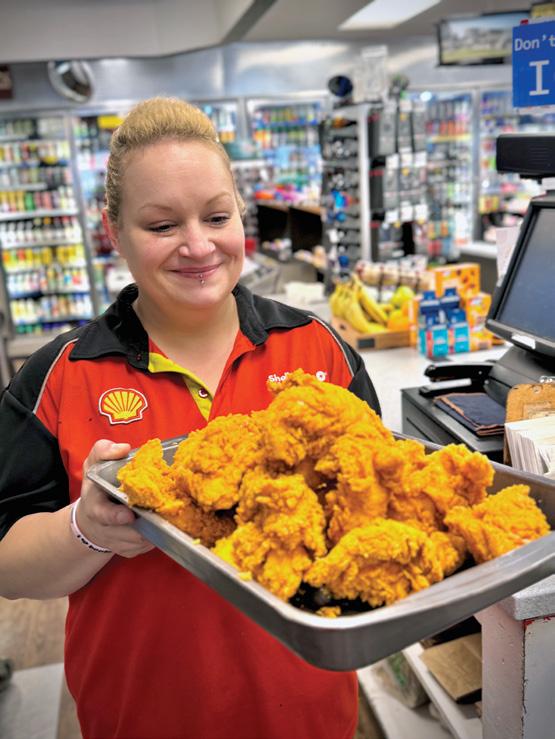
BY SARAH HAMAKER
Like many kids, Krista Patterson’s career plans did not involve joining the family business. Her father, Don Patterson, bought Warrenton Mini Mart in 1988, then added Astoria Mini Mart a year later. In 2014, he purchased Astoria Mini Mart East in Astoria, Oregon, and operated all three stores for several years.
Today, she is carrying on her father’s legacy by running his convenience store.
“Starting at 14, I worked at the stores’ Taco Time franchise and at the espresso stands,” Krista Patterson said. “A few years later, I started doing the books. Then I left for college, telling myself I would never come back.”
Eight years later, in 2014, she returned to take over management of Astoria Mini Mart East, which is now the only one her father owns—he sold Astoria Mini Mart in 2017 and the Warrenton location in 2022.

Krista Patterson, manager of Astoria Mini Mart East in Astoria, Oregon, is always on the lookout for healthy food items to stock in the store. “I’m a healthy eater, so I like to bring in items I want to eat,” she said. To find those products, she attends the NACS Show.
“I found these three-packs of Cuties (a brand of little oranges) at the NACS Show and brought them into my store, and those have been selling well,” she said. Other better-for-you products she discovered at the show include squeezable NOKA smoothies, hummus and packaged pickles.
The way Patterson tells it, her father recognized she wasn’t “doing much with [her] life” and “[he] made me realize I should try running the store before he gave it to someone else or sold it. He was reaching retirement age and pushed me to come home.”
It’s a decision she hasn’t regretted. “I took a lot for granted growing up in Astoria, which is a beautiful part of Oregon where the Columbia River and Pacific Ocean met,” she said. “I didn’t appreciate its beauty as a teenager, but now I get to live on the beach in a place where people come to vacation.”
When she started working at the store, she also recognized many of the customers. “It made me feel proud to hear from locals how hard my mom and
dad worked to make the store a success, and it really opened my eyes to how much the store has been, and is, a part of the local community,” Patterson said. “My whole mindset changed. While this wasn’t my initial dream job, it is a job that allows me to do a lot of the things I wanted to do.”
Working for herself gives Patterson the freedom to volunteer and carry on her parents’ community-minded focus of the store. “I watched my parents do a lot for the community, and one of the best things about my job is that it brings me closer to the local residents,” she said.
She kept some of the existing community initiatives her parents had and added her own ways that the store could give back to the community. The store sponsors sports teams and offers free laundry services to people in need in its attached laundromat. Patterson volunteers for the annual Astoria Regatta, and sits on the boards of Scholarship Inc. in Warrenton and the Warrenton Schools Foundation.
While Patterson enjoys the social and community aspects of her job, she hasn’t forgotten that she’s running a business. “We’ve built a reputation over the last 37 years and we make sure we meet customers’ expectations each time they enter the store,” she said.
Astoria Mini Mart East boasts several services not typically associated with convenience stores, such as an attached laundromat and a growler fill station with 42 taps. The station has 36 craft beers, 90% of which are from Oregon and Washington breweries. There are also five kombucha flavors. A beer cave offers a large craft bottled- and canned-beer selection, while bait caters to those who come to fish in nearby waters. The gift shop offers t-shirts, hoodies, glassware and growlers for sale.
For food, the store serves her father’s famous fried chicken with homemade ranch and fry sauces, along with jojos—hand-cut and hand-breaded potato wedges.
More than the products and services, the store’s employees are a key reason people stop by. “You’re greeted by staff members, usually the same ones because we have a very low turnover, and that’s really what separates us from other stores,” Patterson said.
She credits workers sticking around to “legitimately caring about all of them. I always have my office door open to talk about work or their personal life.” Most employees have worked at the store for three years or more.
Today, Patterson has no regrets about taking over the family business. “My dad taught me to look at everything from a customer’s point of view—how are they seeing things in the store? It takes a lot of hard work to be here all the time but it’s worth it if we can make one person smile and leave happier than when they came in.”

Sarah Hamaker is a freelance writer, NACS Magazine contributor and award-winning romantic suspense author based in Fairfax, Virginia. Visit her online at sarahhamakerfiction.com.
Ideas 2 Go showcases how retailers today are operating the convenience store of tomorrow.
To see videos of the c-stores we profiled in 2024 and earlier, go to www.convenience.org/Ideas2Go



There are 152,255 c-stores in the United States according to the 2025 NACS/NIQ TDLinx Convenience Industry Store Count.

The top 10 retailers by number of locations are:
7-Eleven. While the Japanese parent company managed uncertainty about its future ownership, 7-Eleven in the United States continues to be a market defining operation. Its 12,414 stores, down from 12,601 last year, make up 8.2% of U.S. convenience stores. The retailer lost stores in five of the six NACS regions. In Region 4, South Central, which is anchored by Texas, 7-Eleven added nearly 100 locations.
Led by its Circle K banner, Couche-Tard registered 5,833 locations, a slight decline from last year’s 5,845. However, the number is poised to grow, with the retailer’s acquisition of 220 GetGo sites that are set to be finalized in 2025.
Casey’s. Powered by the acquisition of nearly 200 CEFCO stores with locations spanning from Texas to Florida, Casey’s netted a 245 location increase in 2024, with its strongest growth in Region 4, South Central, where the retailer went from 229 to 398 locations, and Region 2, Southeast, from 52 to 101 locations.
GPM Investments/Arko. Operating “a family of community brands” that includes Fas Mart, Scotchman, Roadrunner Markets and many other regional banners, GPM Investments operates 1,498 sites, down from 1,517 last year, and is in every NACS region. Its 419 stores in Region 3, the Midwest, is a 10-store increase. It also has 374 locations in Region 4, South Central.
EG America . Operating 10 banners, EG America has 1,405 total locations. Most are in Region 1 (814), where Cumberland Farms is a well-established c-store brand. In a series of transactions, the company sold dozens of its stores in the Midwest (Region 3) and Central (Region 5) areas, moving its combined store count in these regions from 455 to 358.
Murphy USA . Murphy USA, which includes Murphy Express and about 150 QuickChek sites in the Northeast, grew by 34 locations in 2024. Murphy USA has stores in every NACS region and plans to open about 50 new stores per year, according to a November 2024 earnings call.
Region 1: Northeast
Region 3: Midwest
Region 4: South Central
Region
Region 6: West
QuikTrip. Oklahoma-based QuikTrip has over 1,118 locations, up from 1,039 in 2023, with the strongest growth in Region 4, South Central. In 2024, the retailer entered Ohio and Nevada with large truck stop-style locations. QuikTrip has plans to break into Florida, Kentucky and Indiana in 2025.
Wawa . Wawa continues to expand outside of its East Coast base, breaking ground or opening stores in five new states in 2024—Alabama, Kentucky, Ohio, Indiana and North Carolina. Wawa also started building its first West Virginia location in January 2025. Overall store count increased from 1,043 in 2023 to 1,096.
Kwik Trip. La Crosse, Wisconsin-based Kwik Trip has 878 locations, 28 more than last year’s count, with most of that growth (25 locations) in Region 5, Central. The retailer began construction on a second distribution center in 2024. The 280,000-square-foot facility will service 350 Kwik Trip stores and include freezer, cooler and dry good space—as well as four rooms for banana ripening.
Maverik . Maverik, which combines the Maverik and Kum & Go (K&G) banners, added 29 locations in 2024 as it continued to operationalize the 2023 acquisition of Kum & Go. The retailer broke ground on two new stores in Kansas, marking the company’s entry into its 14th state.


































































































































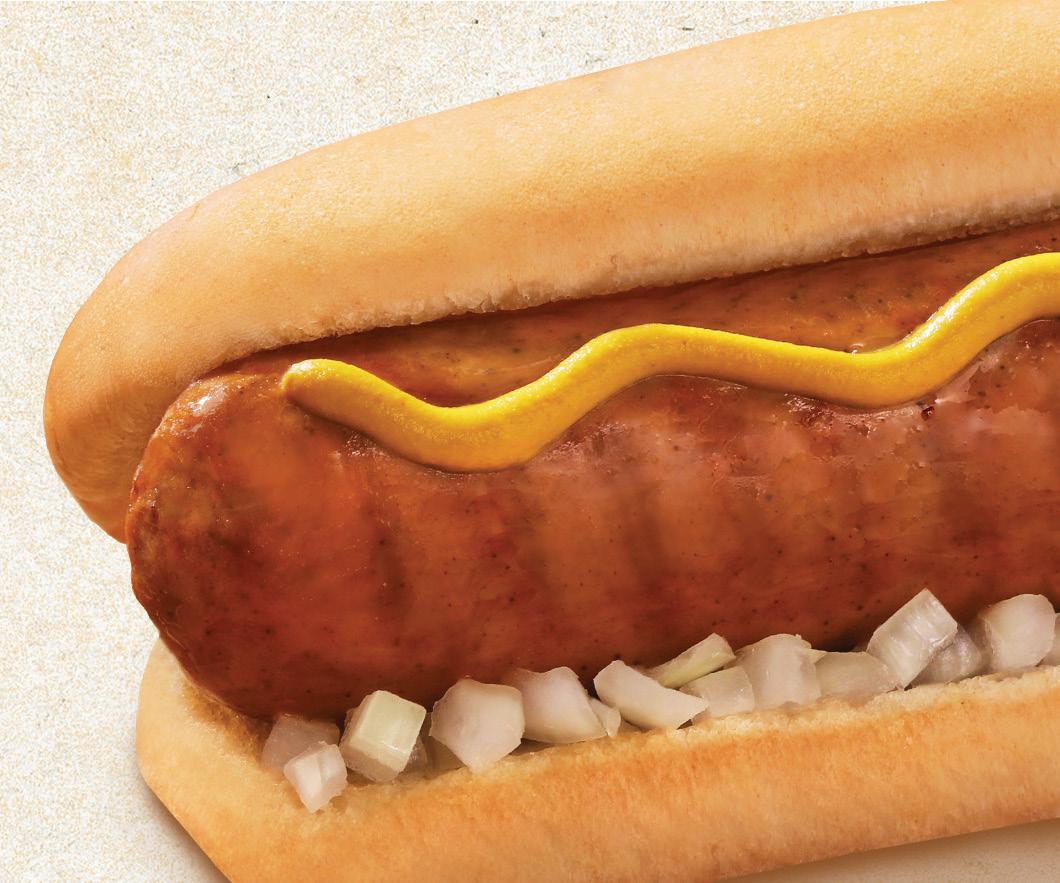


































































































































































































































































































































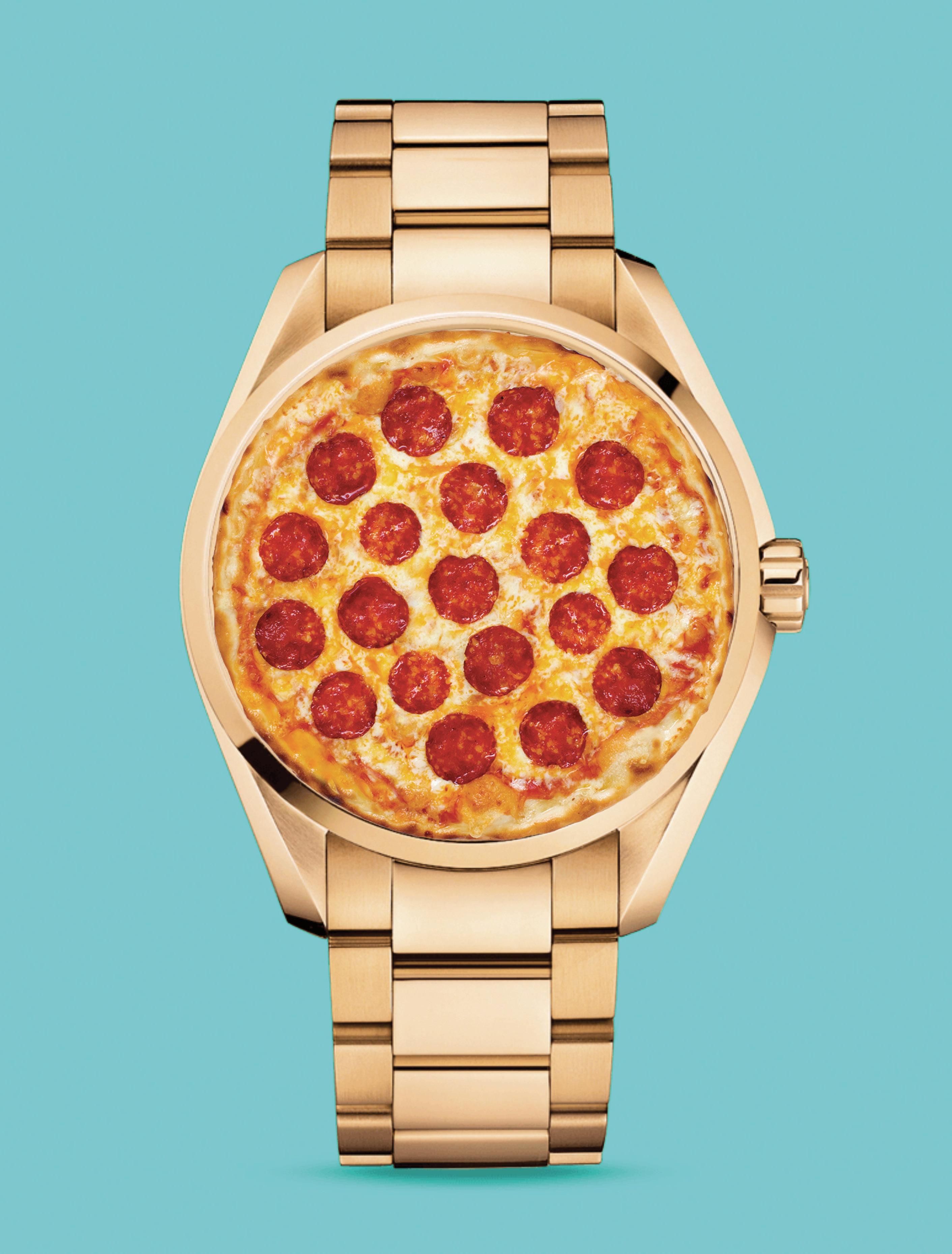
BY AMANDA BALTAZAR
According to Datassential, just 6% of consumers order prepared food and beverages from convenience stores during traditional dinner hours.
Ann Golladay, senior director, Datassential, Chicago, noted that dinner tends to be the largest meal of the day for most Americans. Consumers are much more likely to eat a main entrée at dinner (36%) compared to having a main entrée for lunch (24%) or breakfast (16%). “For other dayparts like breakfast and lunch, consumers turn more towards items like handheld sandwiches or burgers,” she said.

That puts c-store operators to a decision: Do they expand their menu to get a larger piece of the dinner pie, adjust their marketing message to convince consumers that their current menu is a good fit for dinner, both, or neither?
About half of the foodservice business at Curby’s Express Market, a single-store operator in Lubbock, Texas, occurs at dinner time. That’s by design, as the retailer has placed a lot of emphasis on this daypart.
Richard Cashion, chief operating officer of retail at Curby’s, said it’s important to start by offering a few things you’re really good at, then branch out from there.
Curby’s offers pizza, wings, sandwich melts, made-to-order sandwiches, made-to-order beverages and is looking into paninis and other adult-friendly meals, Cashion said. When Curby’s opens its second store, which is planned for 2025, it plans to have Mexican food and other items like pretzel bites. “We are going to have an arsenal of foods for different taste buds,” he said.
Huck’s Market, which has 130 stores and is headquartered in Carmi, Illinois, offers proprietary breaded chicken (tenders and bone-in), sauced wings, sides such as mashed potatoes and mac and cheese, and Godfather’s pizza. Around 20 stores offer rotisserie chicken—whole, leg quarters or individual pieces. Everything but the pizza is available through delivery and most products are made from scratch.
The most important element to a dinner program, said David Grimes, Huck’s vice president of foodservice, is that the food is portable.
York, Pennsylvania-based Rutter’s launched two new pasta dinners this fall and is “working towards a fuller menu,” said Philip Santini, senior director of advertising and foodservice. Other items include french fries and chicken fingers. Key to growing dinner business, he said, is bundling items together to provide value, such as pizza, pasta and a salad.
At Kwik Trip, headquartered in La Crosse, Wisconsin, 22% of foodservice business is at dinner and sales are strong from 4 p.m. to 10 p.m. The bestsellers are pizzas (47% of dinner business); fried chicken items (bone-in, tenders, boneless wings and crispy sandwiches), which constitute 32% of dinner business; and take-home meals (36%) such as beef stroganoff, chicken alfredo and a chicken enchilada bowl. To keep things exciting, the stores have a rotating menu, with offers such as whole chickens on Mondays and boneless wings and crispy sandwiches on Tuesdays.
A lot of add-on business comes along with dinner items, said Carrie Wiggins, director of foodservice at Kwik Trip. Dinner customers are also picking up egg rolls, coleslaw, fries and cheesy breadsticks, and often grocery basics like milk, bread and eggs.
One way convenience stores can boost their dinner business is by offering semi-prepared elements of a meal that require some minimal effort from the consumer, said Kay Segal, founder and managing partner, The Business Accelerator Team, a convenience store advisory firm in Phoenix, Arizona.
Many Americans want a home-cooked meal in the evening, she said, but they also want simplification and to be in control.
Stores can offer simple foods from their cold case, Segal said, from pizzas ready to go in the oven, to chicken, meatloaf, meatballs and sirloin steak complemented by salads— leafy or coleslaw or potato salad—or vegetables ready to heat.

At House Autry we make serving southern flavor easy and quick. With more than 200 years of milling breadings, mixes and batters with southern spice blends, there’s no easier way to offer authentic southern-made fried chicken or seafood, biscuits, hushpuppies, pancakes and more. Contact
Ready-to-heat meals sell best in more rural convenience stores, said Jonna Parker, fresh foods market research expert and thought leader for market research company Circana, because there aren’t many other options nearby.
Each c-store should tailor its dinner offerings to the surrounding market, said Parker. But what’s key is that meals can be ready in under 30 minutes, and prep and cleanup are minimal.
These foods are most likely to resonate with older and younger shoppers, who tend not to have children living at home, so offering one- or two-portion sizes works well, she added.
And for seniors who have been used to cooking from scratch for years, it’s a great idea to offer ingredient-based meals because it’s what they’re used to, she said, adding that it can be smart to offer cuisines that are harder to make at home, such as Mediterranean or Indian.
Retailers should also provide healthy options, added Parker, though she points out that “what appeals is different generationally. Older consumers are more likely to be following a diet like high fiber, low sugar. Younger generations are looking for functional benefits like energy or wellbeing of the mind. They both want food as medicine. Overall, fiber is the top-sought claim among the older generation,” she said.

Another driver is that “everyone in the same household doesn’t like the same ingredient,” said Parker, “so it’s a good idea to let shoppers choose one or two curated ingredients like noodles versus rice, or carrots versus broccoli. It’s an even better idea to offer a bundled meal, which appeals to c-store shoppers,” Parker said. “We know people want bundled discounts and they are used to it from QSRs.”
Parker said separating out the elements of a meal helps consumers “mix and match. They pick their main, they pick their side.” And having a rotation where certain meals are offered on certain days—Taco Tuesday, Indian Wednesday, etc.—can draw customers in “and gives people a reason to come back.”
This also offers a great opportunity for convenience stores to build baskets between 4 p.m. and 7 p.m., which is when around 40% of c-store visits happen, said Segal.
Some items could be complemented by center store items, too, she points out. Stores could sell hamburgers from the cold case, then complete the meal with the buns, ketchup, American cheese and six-pack of beer from elsewhere in the store.
If you offer ready-to-cook meals, it’s important to promote them. “It takes re-educating the consumer about what you have in your store,” said Segal. “There is a market of people who want to prepare their food at home. It makes people feel like they are cooking.”
A dinner program can run out of a convenience store without too much equipment. Huck’s has impinger pizza ovens, pressure fryers, basket fryers, rotisserie ovens and warming cabinets. “It’s an investment, but we see a return on it,” said Dave Grimes, vice president of foodservice.
Most Rutter’s stores have four fryers because there’s a lot of fried food. The pasta meals are provided by a manufacturer, so Rutter’s simply heats the food up and serves it. Fryers are very labor intensive, said Philip Santini, senior director of advertising and foodservice, since employees need to watch over them and regularly change the oil.
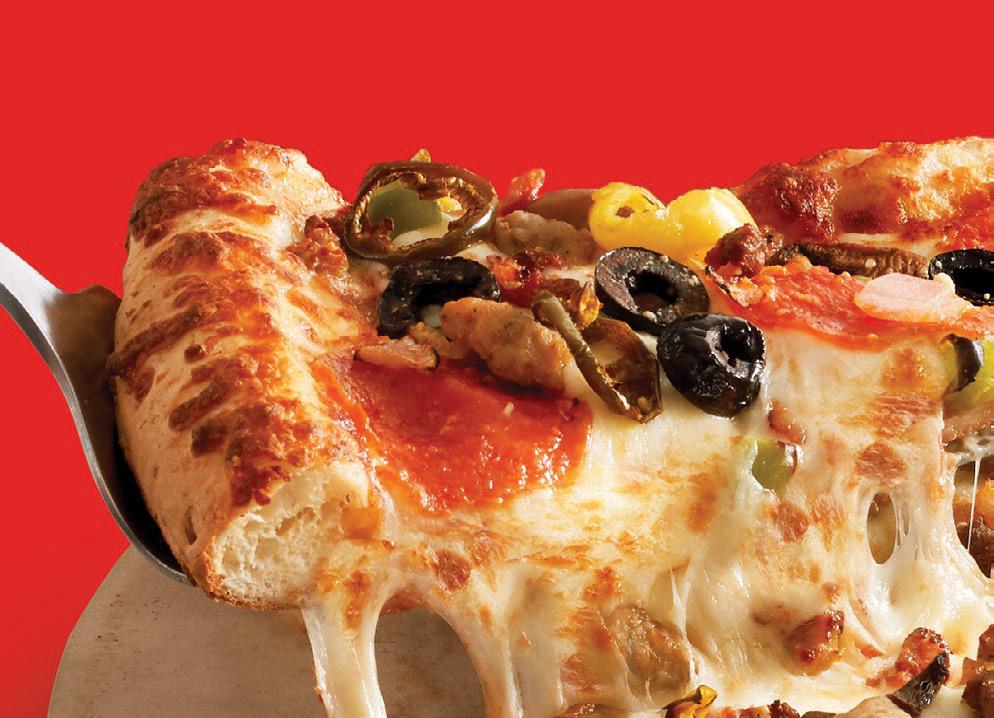

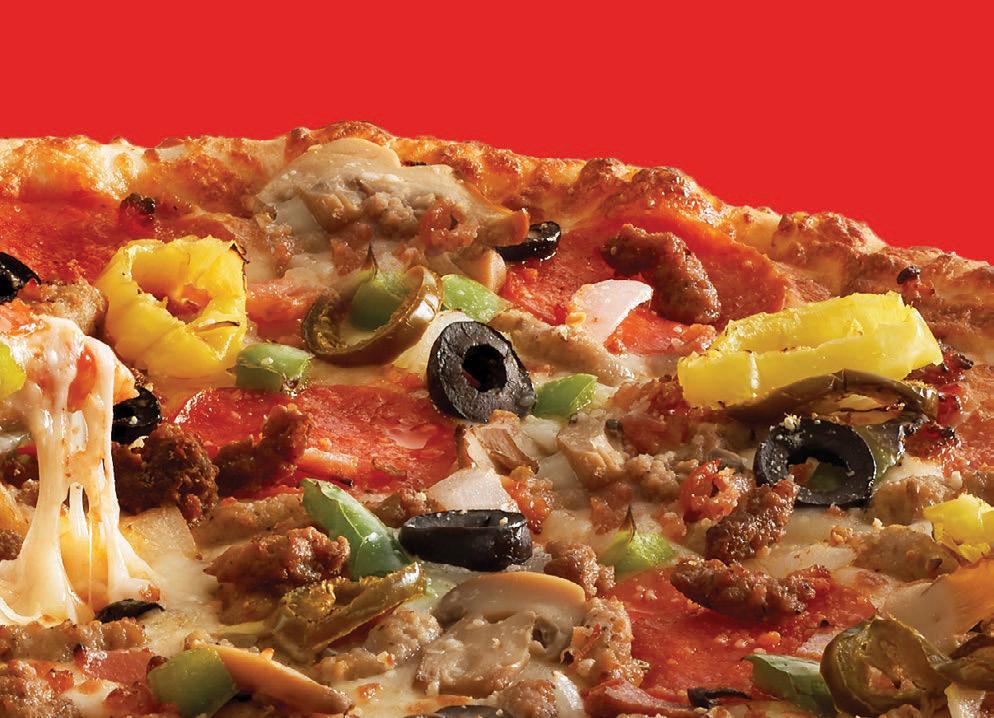

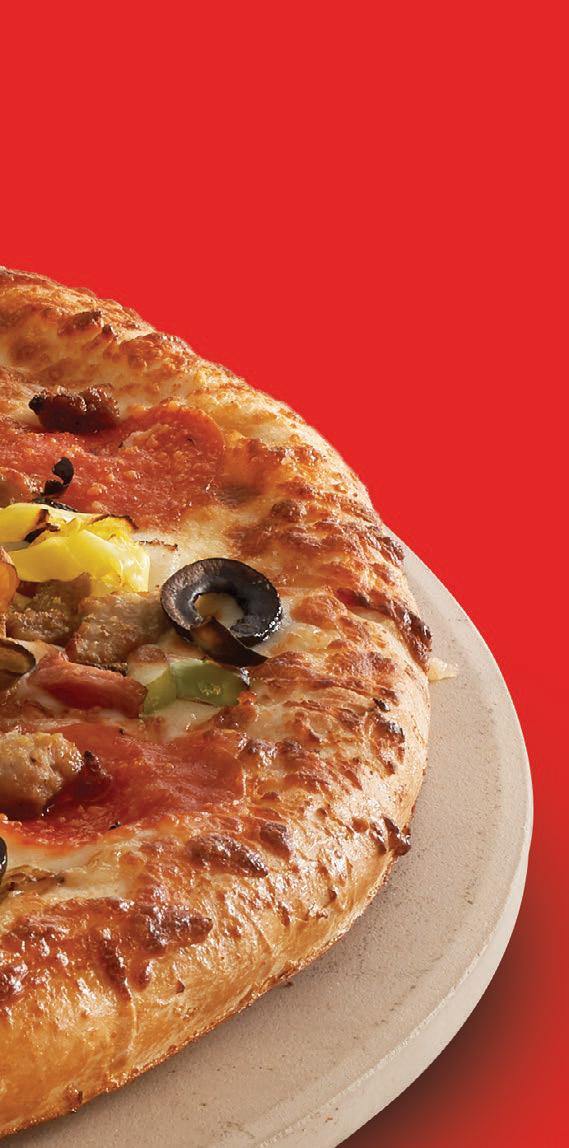

Segal also noted that the marketing strategy must focus on being a solution for dinner and not on highlighting the products themselves. And stores can play up their advantages, too, she pointed out. Let customers know they can multitask by getting dinner while refueling their car, or that a convenience store has shorter lines than the supermarket.
Marketing is a pivotal part of increasing your dinner daypart sales.
Dinner is the meal most likely to be planned in advance, said Golladay, so “getting on the radar early is important to making the consideration set.”
Most Rutter’s stores have 15 or more screens through which the chain promotes its products. The retailer frequently photographs every foodservice item in a professional studio and rotates this bank of images through the screens or on self-ordering kiosks. The spotlights are a mix of dynamic (slightly moving) and static visuals and the occasional video. “Dynamic content tends to capture more attention, especially during high-traffic times,” said Santini.
Huck’s highlights enticing images of its food on entry/exit door strips, with die-cut
images on different areas of the doors to highlight food items. It also features food messaging on pump toppers and scrolls through different images on in-store screens “with the goal of being enticing,” said Grimes. Images might show “a pizza with cheese oozing off it or wings glistening.” Some are straightforward photos, some are dynamic images and some are short videos.
Over the past year, Kwik Trip has more heavily promoted items that are part of its foodservice program instead of only products that can be supported by its vendors. “This has made a difference,” said Wiggins, because the vendors “often bring us new ideas to try.”
That’s how the Kwik 6 idea—a six-pack of a variety of items such as taquitos and cheesefilled breadsticks—originated.
“We have a calendar of items that we pro mote regularly,” said Wiggins, adding that the chain has had many of these promotions for a decade or more, which means “guests know what to expect from us.”
And stores would be remiss not to reach consumers on their phones to promote din ner offerings.
Over the past year, Curby’s has doubled its social media impressions. It first focused on its text and email marketing campaigns,
“According to Food Genius, 80% of Americans have no idea what they’re having for dinner at 4 p.m. and they really don’t like to cook. I think there’s huge opportunity for us as an industry,” said Lori Buss Stillman, vice president of research and education at NACS during the NACS Show Education Session “Winning the Dinner Daypart.”
Stillman asked her audience to play a game: She put numerous well-known QSR logos on the screen and asked attendees to shout out what they’re known for. Each logo, including the likes of McDonald’s, Starbucks, Chick-fil-A, Taco Bell
and more, received a resounding answer from the audience. Then she presented some top c-store brands. This time, the responses were muted (except for a couple, like pizza for Casey’s and hoagies for Wawa).
“If 80% of consumers don’t know what’s for dinner, and they’re confused when they’re driving down the street and they don’t know what we stand for, what do we think the odds are that they’re going to pull in and stumble across our great pizza program or our great burger program?” Stillman asked.
In 2023, 25.7% of shoppers surveyed as they were leaving a



convenience store said that they planned to go to a quick service restaurant within 30 minutes. In 2024, that share increased to 28.7% of shoppers.
The survey data showed there are three main answers to why customers are going to a QSR. First, it’s a specific choice. A customer might be looking for pizza, but they’re at a c-store known for chicken. The second is the customer’s perception of quality, which currently is not where c-stores would like it to be—they’re leaving because they think they can get a better pizza, better hot dog or


When customers come to a convenience store for dinner, they’re looking for fresh and high-quality foods, according to Datassential.
“Other key factors include cleanliness, convenience and visual appeal,” said Golladay.
Dinner is the most challenging daypart for Huck’s, Grimes said. “So that means positioning ourselves in the consumer’s mind as a viable alternative.”
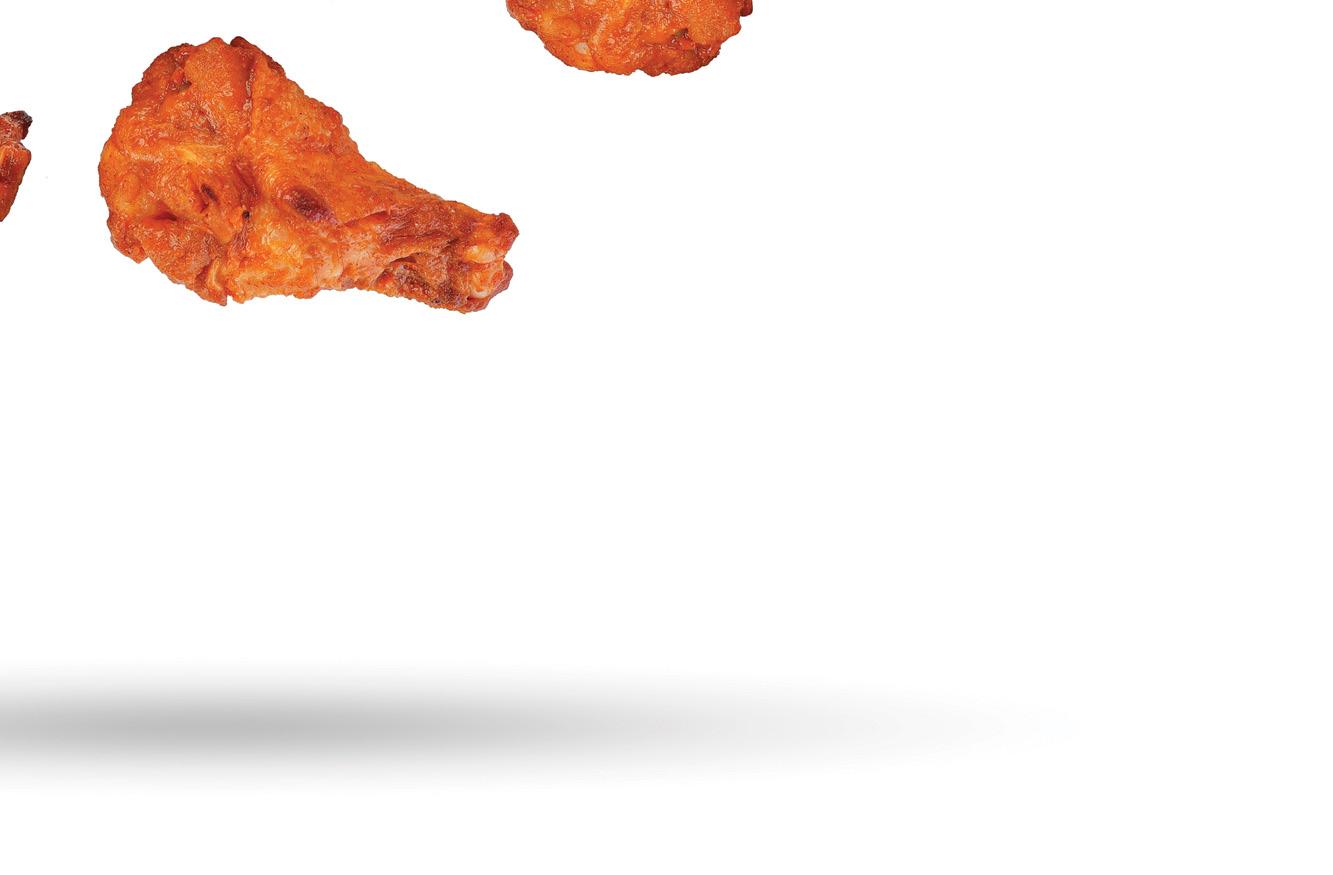
and then drew customers to social platforms. Having all messaging be the same, with the same feel, is important. “We don’t have multiple people touching it. And because it’s one ecosystem with our POS provider it’s easy to
Huck’s features a fair amount of content on Facebook and is starting to use other social promotions to its Huck’s Bucks Big Reward
better hamburger somewhere else. And third, consumers are increasingly price sensitive, so they are leaving to find a better deal.
Stillman recommends that operators think BIG:
•
Be known for something. Get customers to think of you when they’re craving the best pizza, etc.
• I nterrupt a routine. Inside or outside the store, get customers to notice the offer that you have.
•
Grow with existing customers. How are you engaging with the customers already at your store?
This past spring, Kwik Trip ran a six-week campaign that was all
What’s important, he said, is being consistent with hours, product availability and product quality to establish trust. “Trust that we are open for business, trust that the order will be accurate, trust that we are competitively priced and trust that they will get a great product to enjoy.”
Dinner sales are strongest at Huck’s newest stores because they offer rotisserie chicken, Grimes said. Stores in smaller towns with populations under 3,000 also see better dinner business, he said, “because we’re one of the better options.”
Curby’s draws customers in at certain times with promotions and deals. It runs a beverage happy hour between 2 p.m. and 5 p.m. with 50% off all made-to-order beverages, and it offers $2 pizza slices for loyalty
about Kwik Trip’s “No Ordinary Chicken,” said Carrie Wiggins, director of foodservice at Kwik Trip. From February 27 to April 8, 2024, the company ran numerous sales on its chicken, including having its eightpiece bone-in chicken and tenders on sale.
In addition to the promotions, the Kwik Trip marketing team created a kit of decorations for the store. These included posters, stickers, banners, decals, paper hats, hot spot headers and more. Outside the store, the promotion extended to billboards and social media.
Wiggins noted that for other stores, running a campaign with signage like this doesn’t have to be a lot of work. “In years past, when
we would work on our chicken drives, the stores would decorate for themselves. So, the great news for you is that if you don’t have a big marketing budget, you can go low budget with them. We would get decorations from Dollar Tree, we would get streamers, chicken balloons from Amazon—a variety of things that were really low cost.”
During and after the “No Ordinary Chicken” campaign, Kwik Trip experienced a 7% lift in units, Wiggins said. “Some of the in-store signage stayed up longer—we sent out communication to the stores to say this can stay up and this can come down—to keep our guests coming into the store and looking at them.”
—Leah Ash

customers. And for members of its pizza club, every tenth slice is free. This also applies to the made-to-order beverages. Curby’s also uses its loyalty program to send a promotion to customers who haven’t been in recently.
If you want to become a regular stop on a customer’s dinner circuit, offering limited time offers can make your store more of a draw.
Huck’s runs LTOs at least quarterly, said Grimes, and Godfather’s runs its own. Always having something new helps business, Grimes explained. Huck’s recently started “one day deals” and runs 15 to 20 per month.
Most of its LTOs are through Godfather’s. Recent examples include a Secret Sauce Burger Pizza and a weekend special of a large, single-topping pizza, a 12-pack of any Pepsi product and large bag of Doritos for $20.
Curby’s has a featured monthly pizza. It’s often something unusual like a dill pickle pizza. “We have a lot of fun with our development,” Cashion said. Curby’s develops the products in store and works with its restaurant suppliers to stay on top of current trends, he said.
Santini expects to run more LTOs at Rutter’s and anticipates that some will be in app-only offerings because “we see people ordering a bit later, so it might be good to add value and excitement to our app.”
Datassential’s Golladay emphasizes that an item just being a short-term offer isn’t enough: “Consumers are most motivated to buy something new by something eye-catching, a new flavor or discounted pricing—all of which could be tied to an LTO, but the fact that a menu item is simply only available for a short time is less likely to drive traffic.”
However, LTOs have their place, she said. She pointed out that they’re an excellent way to test out new menu items and to offer consumers a new flavor, dish “or something at a new price point without the risks that come with putting it on the permanent menu.”
The most popular time to order food for pickup or delivery on an app is 9 p.m. to 1 a.m., said Adit Gupta, co-founder and CEO of Lula Commerce, based in Philadelphia, Pennsylvania. Even if stores aren’t offering digital commerce for the rest of the day, it’s a good idea to offer it for dinner, he said.
A lot of business for Rutter’s is also shifting towards delivery, “contributing a meaningful share to overall sales, with trends showing continued demand,” said Santini. “Delivery plays an increasingly important role in how we serve our customers,” he added.
It’s largely the younger customers ordering dinner this way, he said. “They’re more inclined to use our apps and are interested in placing an order to have it ready for when they come to pick it up.”
For dinner delivery, Huck’s works with Vroom, a Miami-based aggregator for third-party delivery companies, which “has helped with our dinner daypart because most [orders] are in the evening,” said Grimes. The most purchased item is a large Godfather’s pizza.
John Nelson, CEO and founder of Vroom, sees the busiest time as after work (5 p.m. to 9 p.m.), and said customers often place the order while at work and then pick it up on their drive home.
Pizza is by far the biggest seller, he said, followed by subs, but customers often add to their foodservice order with items like tobacco (the top addition), alcohol or other CPG items such as beverages, which are often upsells through the app.
Digital orders are also much higher in cost than in-store orders, said Nelson. For the month of October, the average first-party delivery sale through Vroom was $44.35.
“The convenience stores who are doing a good job with dinner are making food that no one else does and people are choosing it over a QSR brand—it’s fresh, it’s local and for the quality it comes at a good price point,” said Nelson.

Amanda Baltazar has been writing about foodservice and retail for trade magazines for more than 20 years. Read more of her work at www.chaterink.com

Want to do more with less? Of course you do. Here are some equipment ideas and inspiration for making the most of limited foodservice space and staff.
The new ImVection oven launched by Blodgett at the end of 2024 provides two different cooking technologies—convection and impingement—in each of its four chambers. Cooking plates automatically switch position depending on which menu item is chosen on the control panel, so the person operating the oven doesn’t have to choose what type of heat is best for cookies, pizza or whatever is being prepared.

Another relatively new addition, the ITW Ibex oven launched in 2022. It uses radio frequency (RF) technology to cook food evenly, eliminating hot and cold spots. The RF technology sends and receives frequencies that are then analyzed by an algorithm, allowing the oven to automatically adjust throughout the cooking process.
New equipment can automatically stop the cooking process so that employees don’t have to stop what they’re doing to respond to a beep.
The TurboChef Plexor high-speed oven has automatic loading and unloading, pushing items such as pizzas and cookies out as soon as they’re done.
Pitco TorQ fryers include an automatic basket lift feature, so whatever goes in the oil is taken out at the right time. The TorQ fryers also feature continuous oil filtering and automatic top off. A Smart Oil Sensor alerts operators when it’s time for a new filter, which takes less than a minute to change.
All Day Kitchens, founded by two former Uber Eats employees, offers a high-speed electric unit with pre-programmable equipment integrated with the company’s proprietary
software and frozen foods. Cuisines range from chicken wings to burgers to hearty bowls, with All Day offering five different brands that each have their own menu. Frozen ingredients are shipped to the store, and from there an employee selects the menu item on the pre-programmed screen to cook it.
The food brand that the operator selects determines the right equipment; the oven system takes up 50 to 100 square feet. The all-electric unit also doesn’t need hoods or special ventilation.
“What we were hearing from operators was that they wanted to increase digital sales and delivery, but foodservice can be complicated and labor intensive, and many stores don’t know how to build out a kitchen from scratch themselves. This system helps generate meaningful revenue with just one extra staff member,” said cofounder Matt Sawchuk.
In addition to aiding in staff training, onetouch recipe capabilities can improve the quality and consistency of products being prepared. Recipes can be programmed to include the type of cooking, the time and the temperature. A few ovens to look for include:
• Merrychef’s conneX and TurboChef’s Plexor high-speed ovens each feature touch-

screens with icons and programmable recipe options. The Plexor multi-cavity offers a different type of cooking in each cavity—impingement, convection and rapid cook—and the control panel tells the operator which cabinet to use.
• The XpressChef 3i and Ibex, both highspeed ovens, have touchscreens with digital photo capabilities. The Ibex can remember up to 600 different recipes.
• Many combi ovens also feature onetouch, programmable recipe controls with images or icons, including Rational, Blodgett and Vulcan lines.
At the end of 2024, Hunt Brothers Pizza, a start-to-finish pizza supplier, unveiled its fifth generation Pizza Shoppe. The provider focused on enhancements that would optimize the workspace and make the food prep employee’s job easier. “Many of our store owners have one employee to dedicate to foodservice, so we wanted to make sure our pizza shoppe worked

well when operated by one employee,” said Dee Cleveland, marketing director at Hunt Brothers Pizza.
Hunt Brothers Pizza added a small caddy behind the employee to give them “everything they need right there at their fingertips, so they didn’t have to go to another place in the store to get gloves or find the pizza cutter for example,” Cleveland said.
“Getting into foodservice can be a big jump for some stores, especially when they’re also dealing with labor challenges. Therefore we want our program to be as simple as possible to operate,” she continued. “From make to bake, our pizza takes less than 10 minutes, and so an employee can make pizzas, pop them in the oven, and go back to the cash register to ring people up. It allows c-stores to be nimble with their foodservice program.”
Miso, which manufactures AI-powered robotics for commercial kitchen equipment, introduced the latest generation of its fully automated Flippy Fry Station robot in January. The new generation of Flippy Fry Station automates the preparation of french fries, onion rings, chicken, tacos and any other fried item, the company said. The new Flippy can process more than 100 baskets per hour— almost twice as many as humans.
“At a time of massive labor disruption and restaurants’ inability to hire enough kitchen workers, the new Flippy creates immediate, provable customer ROI, while also unlocking much needed additional pools of labor under federal guidelines by reducing the danger to workers,” said CEO Rich Hull.
Last fall, Chipotle Mexican Grill revealed its new Autocado machine, an avocadoprocessing cobotic (collaborative robot) prototype that cuts, cores and peels avocados before they are hand mashed to create guacamole. The Autocado is currently operating at Chipotle’s Huntington Beach, California, location.
The company also announced the Augmented Makeline, a cobotic makeline. This machine uses “automated technology to build bowls and salads while Chipotle employees operate the top makeline to make burritos, tacos, quesadillas and kids’ meals. Approximately 65% of all Chipotle digital orders are bowls or salads, so the Augmented Makeline can improve employee efficiency and digital order accuracy, ensuring a more consistent experience for digital guests,” the company said.
Karen Alley








































































































































































































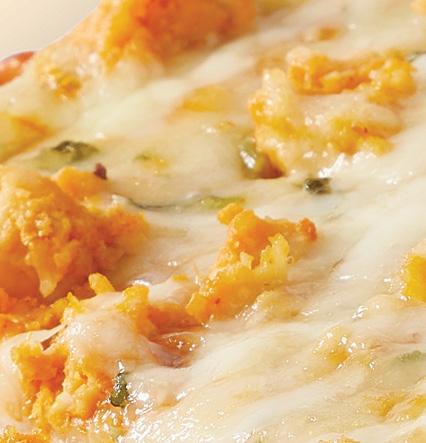



















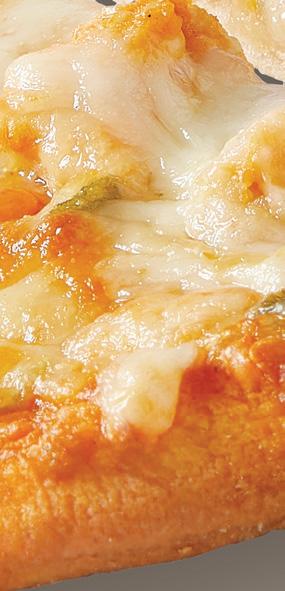


















































Convenience retailers are building out bakery programs, eyeing daylong sales opportunity for bakedin-store goodies.
BY TERRI ALLAN
Sweet baked goods are a morning daypart staple. However, operators can leverage their beverage program to promote bakery sales across all dayparts as they are the perfect ‘plus one’ to any beverage morning, noon or night.”
Each morning, William Haynes and his staff harken back to the classic ad slogan from the ’80s and ’90s. “We wake up saying, ‘It’s time to make the doughnuts,’” said the director of retail operations at two convenience stores—CornerPost and OneStop—in North Dakota, referring to the popular tagline from Dunkin’ Donuts.
Beginning last year, staff members have been arriving at the stores as early as 4 a.m. to begin baking a wide assortment of baked goods that launched as part of a new focus on in-store cafes. “We’ve had a great response from our customers,” Haynes reported of the baked goods program. “They like that the items are baked fresh, and we’ve made the commitment to satisfy them.”
Indeed, some c-store operators are putting a renewed emphasis on bakery programs, seeing opportunity to expand sales throughout the day and appeal to customers in search of a unique alternative to more traditional c-store snacks. “The trend for fresh food is growing in general,” said Farley Kaiser, senior director of culinary innovation at McLane Fresh.
Sweet snacks are no exception. C-stores have the capability to bring convenience to baked goods, she noted, while also tapping into the “snacking all day” trend. Beyond breakfast, there’s lots of potential to market fresh baked goods throughout the day, according to the executive at McLane, which launched its curated Better Case Bakery program for c-stores last year.
Bakery growth can go alongside growth in packaged sweet snacks, a staple c-store category that posted a year-over-year increase of 5.7%, with sales coming in at $3,620 on average per store, per month, according to the NACS State of the Industry Report® of 2023 Data. “While unit sales may need to be boosted, it’s a popular purchase for consumers,” said Emma Tainter, NACS research analyst and writer. “Offering both fresh-baked and packaged is a way to maximize appeal to a broad range of consumers.”
Kaiser and other observers note that with many convenience retailers emphasizing premium coffee programs, tie-ins with fresh baked sweets make perfect sense. “C-stores

now offer barista-grade and bean-to-cup coffee, so there’s certainly opportunity for baked goods,” said Peter Rasmussen, CEO and founder, Convenience and Energy Advisors. “What complements a cup of coffee better?”
Jayne Kearney, director of Bake’n Joy Foods, supplier of muffins, doughnuts and other treats, agrees. “Sweet baked goods are a morning daypart staple,” she noted. “However, operators can leverage their beverage program to promote bakery sales across all dayparts as they are the perfect ‘plus one’ to any beverage, morning, noon or night.”
Duchess convenience stores in Ohio is seeing success with its Sweet Treat offer. The retailer is in the process of expanding its bakery cases to accommodate a larger selection. “Offering bakery items is paramount to a robust foodservice program,” explained Nathan Arnold, director of marketing at parent company Englefield Inc. “Coffee is a big component of our sales and a driver for customers coming to our stores. The Sweet Treat bakery items are the perfect pairing. The smell of items baking in our stores also enhances the overall experience of visiting a Duchess location.” Among Duchess’s bakery offerings are doughnuts, muffins, brownies, cake pops and cookies.
While sales via a bakery case is the most common format for c-stores, at least one operator does a big business in multipacks of fresh-baked goods. Packaged bakery items, such as packs of 12 donuts, account for 80%

of category sales at Kwik Trip, according to Carrie Wiggins, director of foodservice at the 840-unit chain. The multipacks are merchandised front and center at Kwik Trip, often arranged on a cloth-covered table just inside the front door, and are popular with customers to take to the office or school, she noted.

“Bakery is the first thing customers see when they enter the store,” Wiggins explained—a practice common at grocery stores. The attention Kwik Trip gives to bakery— with the items produced at its corporate bakery and delivered to stores—has paid off, as category sales reached $100 million in 2023. “That wasn’t built overnight,” Wiggins noted, “but it shows that if you stick with it, bakery can be a successful category.”
Kwik Trip’s access to a corporate bakery is somewhat unique for c-stores, but retailers are employing a variety of models to bring fresh-baked treats to their guests. The option to bake frozen premade dough is a popular one with convenience retailers. Bake’n Joy, for example, markets frozen pan-free, pre-deposited muffin batter that is simply placed on a sheet pan and baked. “Their sturdy liner keeps its shape during the bake, so no muffin pan is required,” explained Kearney. “They enable operators to bake what is needed and to bake fresh throughout the day.” Banquet d’Or Bake’Up’s line of pastries, meanwhile, is “true freezer-to-oven, no proofing or defrosting required,” according to Raoul Dexters, USA commercial manager at marketer Vandemoortele USA. The biggest benefit of the line to c-stores, he said, is that “with labor shortages and rising costs, Banquet d’Or removes the typical early morning start and expertise traditionally needed to provide


high-quality bakery products to consumers.” Vandemoortele markets both sweet and savory pastry options that appeal to c-store customers throughout the day, Dexters noted.
Rich Products recently introduced a parbaked French breadstick that is designed for busy c-stores. The breadsticks can be completely baked from the freezer in 5 to 12 minutes, the company said. Elizabeth Sommer, customer marketing manager at Rich’s, called early response to the new product positive. “With snacking occasions on the rise, we see the breadstick as a portable, satisfying and satiating alternative to a sweet offering,” she said, an option comparable to soft pretzels or plain croissants.
Fully baked items that arrive frozen to stores require even less labor on the part of retailers.
McLane’s Better Case Bakery products, which include cookies, doughnuts, muffins and new cinnamon rolls, are all frozen-to-thaw options. “They’re easily operational. Retailers just take out what they need,” said Kaiser, adding that the products’ long shelf life also helps to save on labor. Thawed and frosted-in-store doughnuts are most popular at Kwik Trip, Wiggins reported, with average weekly sales at the chain of nearly 870,000 units.
Customers at Haynes’ stores in North Dakota, meanwhile, can customize baked goods, thanks to the locations’ ice cream bars that stock toppings ranging from fresh fruit to sprinkles. “It only takes a couple of minutes to warm and glaze a doughnut, and customers don’t mind waiting,” the retailer said.
At Cone & Steiner c-stores in the Seattle area, sweet treats baked at local bakeries and delivered to the shops are showcased. According to owner Dani Cone, muffins, scones and cookies are the go-to items for her customers, but other baked goods include biscotti, cinnamon rolls, baguettes and larger loaves of bread. The baked items are merchandised on the front counter, adjacent to checkout and the coffee counter.
In addition to “the potential for profit margins and boosting the bottom line through increased sales,” Kaiser noted that bakery programs provide an “entry point” for c-stores not yet involved in foodservice. “Bakery is a good place to start with foodservice.” Not surprisingly, fresh-baked items stir impulse sales. “You get that critical aroma which can trigger impulse sales,” Rasmussen said.
But bakery programs can also provide some challenges for c-stores. As with other food-service sectors, bakery requires an investment in labor. “We see labor shortages and rising labor costs as a challenge for all retailers, but especially within the c-store space,” remarked Vandemoortele’s Dexters. “When implementing a bakery program, c-stores need products that require minimal training, expertise or hours.” Even with Corner Post’s commitment to the program, Haynes concedes that getting all the baking done before the stores open for business can be a challenge.
“Controlling waste and maximizing profit are key challenges for the bakery category,” noted Wiggins. But thanks to Kwik Trip’s expert reporting and analysis system, the chain is able to minimize waste. Price reductions on baked items late in the day are also useful, she said.

“With the exception of biscotti and a few kinds of cookies that can be okay for two to three days if stored properly, these are all one-day items,” agreed Cone. “Perishability can be a challenge.”
And with consumers more concerned with health and wellness than ever, plus the impact of weight-loss drugs, it wouldn’t be surprising if c-stores experienced some pushback against sugar- and carbohydrate-laden treats. For that reason, both Kaiser and Kearney see opportunity for small-portion baked goods. “Consumers definitely want to snack on sweet indulgences, and great-tasting smaller offerings give them permission without guilt,” said Kearney. In Seattle, where consumers have a high level of “mindfulness” when it comes to indulgences, Cone & Steiner regularly offers gluten-free and vegan baked products, Cone reported.
But most c-store operators and suppliers contacted for this article see little remorse among their bakery customers. “People like the comfort that baked goods bring,” said Wiggins, adding that could be the reason Kwik Trip customers like the chain’s multipack program. Rich’s Sommer agrees. “As much as consumers are looking for healthy options, they’re also looking to satisfy cravings, treat themselves and indulge in something delicious,” the marketer said.
Effective marketing and merchandising support behind a bakery program is key to its success. In addition to social media, Kwik Trip promotes its baked goods via print and outdoor ads. In fact, a billboard campaign for the items last fall drove an increase in sales of some 250,000 units a week, Wiggins reported. Rasmussen added that incentives for c-store loyalty members can help lift trial of baked goods. “A free cookie for rewards members on a particular day of the week,” for example, not only builds sampling but store traffic too, the consultant noted.
Cross-merchandising bakery products with beverages, particularly coffee, is a best practice not to be overlooked, retailers and suppliers said. “C-stores have found success by in-
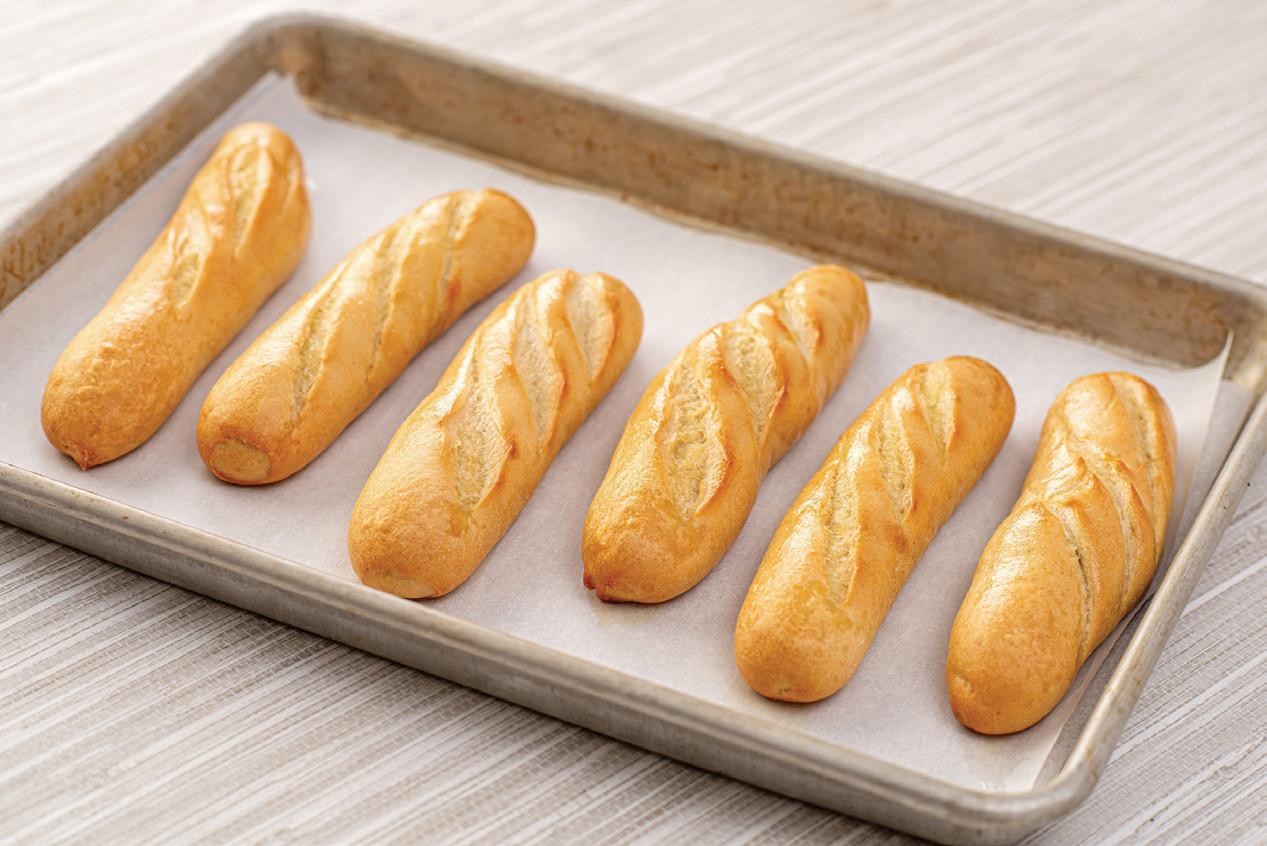

cluding cookies and doughnuts in value deals and bundle programs,” explained Sommer. She points to cross-merchandising doughnuts near the coffee station in the morning as a smart tactic. Seasonal and LTO options are another good strategy, the Rich’s executive and others said. “Seasonal baked goods provide a draw for consumers and create a reason to visit the store,” Sommer remarked. “They can offer fall favorites like pumpkin spice and caramel apple, for example, or strawberry lemonade and s’mores during the summer.”
Regardless of the offerings, a c-store bakery program can’t succeed if it’s not properly presented. Bake’n Joy’s Kearney suggested that if operators take a few minutes after the morning rush to “spruce up the display case,” including changing stained basket liners, replenishing low inventory and creating neat front facings, they have the highest potential for success. “Bake fresh throughout the day to create the enticing sights and smells of fresh baked sweet goods,” she said. “Taste is still king, and customer satisfaction will translate into repeat purchases.”

Terri Allan is a New Jerseybased freelance writer, specializing in consumer products and retail channels. She can be reached at terri4beer@aol.com.
C-stores are innovating to convince customers who are already in the store to purchase a meal there—instead of at the QSR down the street.



Curated menus and aggressive bundling promotions by QSRs may have caused a slight increase in convenience stores’ foodservice leakage rate in 2024, according to the most recent Convenience Voices study from NACS. Convenience Voices is an annual shopper survey that captures convenience shoppers’ feedback while they are on site at a store.
The 2024 study found that 28.7% of c-store shoppers intended to visit a QSR (a quick service restaurant—for example, a fast-food chain) within 30 minutes of their convenience visit.
The figure stood at 27.5% in 2023. Jayme Gough, director of research and development at NACS, said the results showed the top two reasons for this leakage were primarily due to a perceived lack of variety and options for shoppers. Perceived quality or value were less important factors.
A limited c-store menu was the most frequently cited reason why consumers said they would go to a QSR. 37.9% of those surveyed said they wanted to purchase a food item that the c-store didn’t offer. A close second, 27.3%, said that while they purchased food at the convenience store, they wanted additional food options that weren’t available.
Among the other reasons respondents gave for visiting a QSR on the heels of a c-store visit were that “a wide variety of food options were available elsewhere” (22.0%) and “higher quality food options were available elsewhere” (18.9%). (Note: Shoppers were able to select multiple options.)
Burger restaurants were the top foodservice leakage destination. This was consistent across all NACS regions, but digging deeper into the data showed that regional preferences emerge when it comes to the second restaurant type most likely to be causing foodservice leakage. In the Northeast and Southeast, fried chicken chains were cited as the No. 2 destination for food, while in the Midwest, Central and South Central regions, Mexican fast food was ranked second. The West region was the only one in which pizza chains came in second as a food leakage destination.
For more information on Convenience Voices, or to participate as a retailer or supplier, contact Jayme Gough at jgough@ convenience.org.
Foodservice leakage is a “very real issue for the industry as a whole,” said Roy Strasburger, CEO of StrasGlobal, a retail consulting firm. The loss of potential foodservice customers who are at the pump but never set foot in the store is particularly troubling.
“They’re filling their tanks and leaving. Do those customers even know that foodservice is available?” Strasburger said. In many cases, they don’t, he added, as the offer isn’t promoted at the pump. And when it comes to in-store customers, some may be leaving to purchase hot food elsewhere due to the store’s lack of merchandising, Strasburger continued. “If foodservice isn’t front and center, it casts doubt on the foodservice offerings and quality,” he said. “Unfortunately, the c-store industry is still fighting the ‘greasy gas station’ image related to foodservice.”

TXB offers a diversified menu, including hand-breaded chicken and fajita tacos, to help guests avoid menu fatigue.
Mario Spina, owner and CEO of St. Charles, Illinois-based Parent Petroleum Co., said that since the Covid lockdown, “the quality and presentation of foodservice for c-stores has become much more important.” Just a few years ago, consumer were more focused on delivery and less on in-store purchases, but today it’s important for c-stores to serve as “a one-stop shop for consumers in search of quality foodservice,” said Spina, whose Chicagoland stores feature fast-casual dining concepts.
Ben Hoffmeyer, vice president of marketing and merchandising at TXB stores in Texas, agreed, noting that today “guests are looking for consistency and availability of delicious food options across all dayparts.”
Philip Santini, senior director of advertising and foodservice at Pennsylvania-based Rutter’s, said consumer expectations for “convenience, speed and quality food options” are on the rise, and “QSRs continue to capitalize on these preferences with streamlined ordering systems, competitive value deals and mobile app engagement.” For its part, Rutter’s recognizes that consumers are seeking similar experiences at c-stores, Santini continued, “which is why we’ve focused on providing high-quality foodservice, digital ordering platforms and robust loyalty programs to capture and retain their business.”

With inflation pressures and consumer concern over rising prices, QSR operators have become aggressive in marketing value promotions. McDonald’s, for example, recently launched its McValue platform, which offers a buy one, get one for $1 deal on certain items, including Sausage McMuffins and double cheeseburgers, throughout the day. It also launched a $5 meal deal last summer, which it extended through the end of December.
In some cases, QSR prices have dropped as low as $2 for meal combos and $5 family meals, Gough reported. “Consumers are still price sensitive,” she explained, and fast-food operators are aggressively bundling offers in response.
The QSR model could be at the heart of the disparity when it comes to value pricing: QSRs can produce food more cheaply, explained Strasburger. In addition, value meals provide the chains opportunity to upsell, Strasburger noted, such as the ability to supersize an offer, resulting in a higher total than what customers may initially intend to spend.
While competition from value deals have surely challenged many c-stores, Santini said Rutter’s has been insulated. “While we’re aware of QSR value promotions, we haven’t seen significant negative impacts on our food-
According to NIQ, the average c-store sells 335 options when it comes to packaged beverages, 175 options when it comes to candy, 161 different versions of salty snacks, and 76 versions of packaged sweet snacks.
When it comes to beer, there are an average of 136 choices, and another 22 when it comes to wine.
There are an average of 40 foodservice items prepared onsite, plus 23 commissary items, 12 cold dispensed choices and nine different frozen dispensed choices.
Start to mix and match and you have huge numbers. Suppose a customer walked into the average c-store every day and picked one item from each of these categories: a packaged beverage, candy, salty snack and a packaged sweet snack. The customer would have more than 700 million different combinations to choose from—enough for a visit every day for almost two million years without repeating.
The advantage c-stores have over QSRs is their ability to offer options. Here’s a look at how some numbers combine. Is there an options story your stores can tell to convince customers to choose your foodservice over competition from other channels?
240,000 combinations
If a c-store offers 8 roller grill items, 200 packaged beverages and 150 candy options
120,000 combinations
If a c-store offers 6 kinds of pizza, 200 packaged beverages and 100 salty snack SKUs
7,200 combinations
If a c-store offers
8 flavors of coffee, 30 kinds of fresh doughnuts and 30 energy drinks
19,200 combinations
If a c-store offers 8 sandwiches, 16 fountain flavors and 150 salty snack SKUs
5,400 combinations
If a c-store offers
30 varieties of energy drinks, 30 meat snack options and 6 kinds of fruit
service sales,” he said, as “our competitive pricing, loyalty program incentives and focus on quality food” help differentiate the retailer.
“Additionally, the convenience of combining fuel, groceries and premium foodservice options in a single trip continues to resonate with our customers,” he said.
Ryan Malkowski, senior director, foodservice, at Performance Food Group (PFG), added that menu boards at QSR locations and their “speed of service” provide an advantage.
“There may be opportunity for some c-stores to emulate those branding tactics,” he noted, as some convenience retailers “have a hard time in communicating their offers.”
On the flipside, c-stores offer numerous features that QSRs lack.
Spina noted that at Parent Petroleum Co.’s Pride stores, “We have an advantage over restaurants in that when people are waiting
Santini said that Rutter’s closely tracks its foodservice performance and that “recent trends indicate that our investments in menu variety, meal bundles and targeted promotions have helped reduce leakage to QSR. Gains have been driven by our expanded ordering options, customer loyalty incentives and competitive pricing.”
According to Hoffmeyer, TXB’s diversified menu helps guests avoid menu fatigue.
“One day a guest may feel like hand-breaded chicken and the next day, it may be fajita tacos or brisket quesadillas,” he said. The Texas c-store chain has also taken a proactive approach to value pricing, he continued, with promotions like two for $6 chicken rolls and two for $5 breakfast tacos. The moves have driven increased food transactions, Hoffmeyer noted.
At Pride, meanwhile, its Urban Counter and Taco Urbano concepts are more akin to a fast-casual restaurant than a QSR, Spina




analysis and understanding risk factors can help make stores more secure.
BY CHRISSY BLASINSKY AND BEN NUSSBAUM
That’s the message operators want to send to their customers and employees—and an important reality they make sure to protect.
But how does safety seamlessly blend with customer experience and brand messaging? If some safety measures make a convenience store less convenient, at what point do they stop being a net positive?
An easy example: Doors. Having multiple points of entry makes it easier for customers—as well as bad actors—to grab and go.
Another example is messaging around safety at the pump. Signage or audio or video messages reminding customers to lock their doors and take their valuables with them if they go inside are great ways to keep everyone safe. Will customers interpret these messages as a sign that the retailer is focused on safety—and want to come back— or as a sign that the location is unsafe?
Striking the right balance of security and safety and customer experience isn’t easy, but a growing force of dedicated convenience store leaders are fully engaged in working through these challenges.
The inaugural NACS Loss Prevention and Safety Symposium gave operators a chance to learn from each other, learn from industry leaders and share problems and solutions. Attendees included a mix of everyone from single-site operators who manage all aspects of their stores to long-tenured security and safety professionals—both from within and outside the industry—who share a relentless focus on safety, asset protection and loss prevention.
Imagine a homeless person has taken up residence on a c-store site.
What should the store manager do?
A good answer in most situations looks something like this: Approach the person on a human-to-human basis. Ask their name, give them a cup of hot coffee and say something like, “Can you do me a favor? You can stay for maybe another 45 minutes and then you have to move.” It’s the right way to treat people but also more effective than dialing 9-1-1, calling the store operations center, escalating the situation verbally or hoping the problem solves itself.
Younger employees grew up in an environment where they’re used to doing active shooter drills in schools. They expect safety and security to be a point of conversation.
De-escalation is about playing chess instead of checkers. It’s about thinking about the desired outcome and being strategic about how to get there. And it can be about stopping problems before they start—call it pre-de-escalation.
Michael Loox, senior manager of store security and loss investigations at Sheetz, and Courtney Trieger, manager of retail asset protection support at EG America, shared concrete examples and advice around de-escalation during a breakout session at the Symposium.
• Loox shared the concept of prevention through service, which looks something like this: “Excuse me, but I notice you’ve selected a few of those candy bars. You might want to buy more since it’s a limited time offer.”
• Beer caves can be a sore spot. Adding a monitor so that people can see themselves walking into the cave and/or requiring that they scan an ID to enter the cave are ways to get ahead of the problem.
• In a similar vein, body cameras for security officers are promising—particularly ones that have a screen so that people can see they’re being recorded. If security officers aren’t present,
the store manager might be a good candidate to wear the tech.
• Here’s a specific tip: Train frontline workers not to say “have a nice day” to a departing customer after after an angry encounter. It might trigger the individual and restart a confrontation.
• Training around de-escalation (and any other safety related topic) is valued by employees and reinforces the importance retailers place on their most valued asset: people. If for some reason your particular store culture is challenging around this topic, start small and get buy-in from a handful of stores or a few key leaders. Younger employees grew up in an environment where they’re used to doing active shooter drills in schools. They expect safety and security to be a point of conversation.
• If an in-store situation continues to escalate, the key is to just leave a person alone. Train your people to not make eye contact or engage in any other way.
Not all stores are created equal. When it comes to balancing safety and security with customer experience, it’s vital to know which stores require what level of risk management.
The basic concept is relatively simple: Group your stores into tiers and assign different interventions to different stores. A store that is in the lowest risk tier may not require any additional resources, whereas a store in the highest risk tier may require an all-of-the-above approach.
Britt Davidson, senior manager of asset protection at Parker’s Kitchen, shared in a breakout session important advice and insights for gathering and making data-driven decisions, as well as how operators can execute a safety strategy for their business.

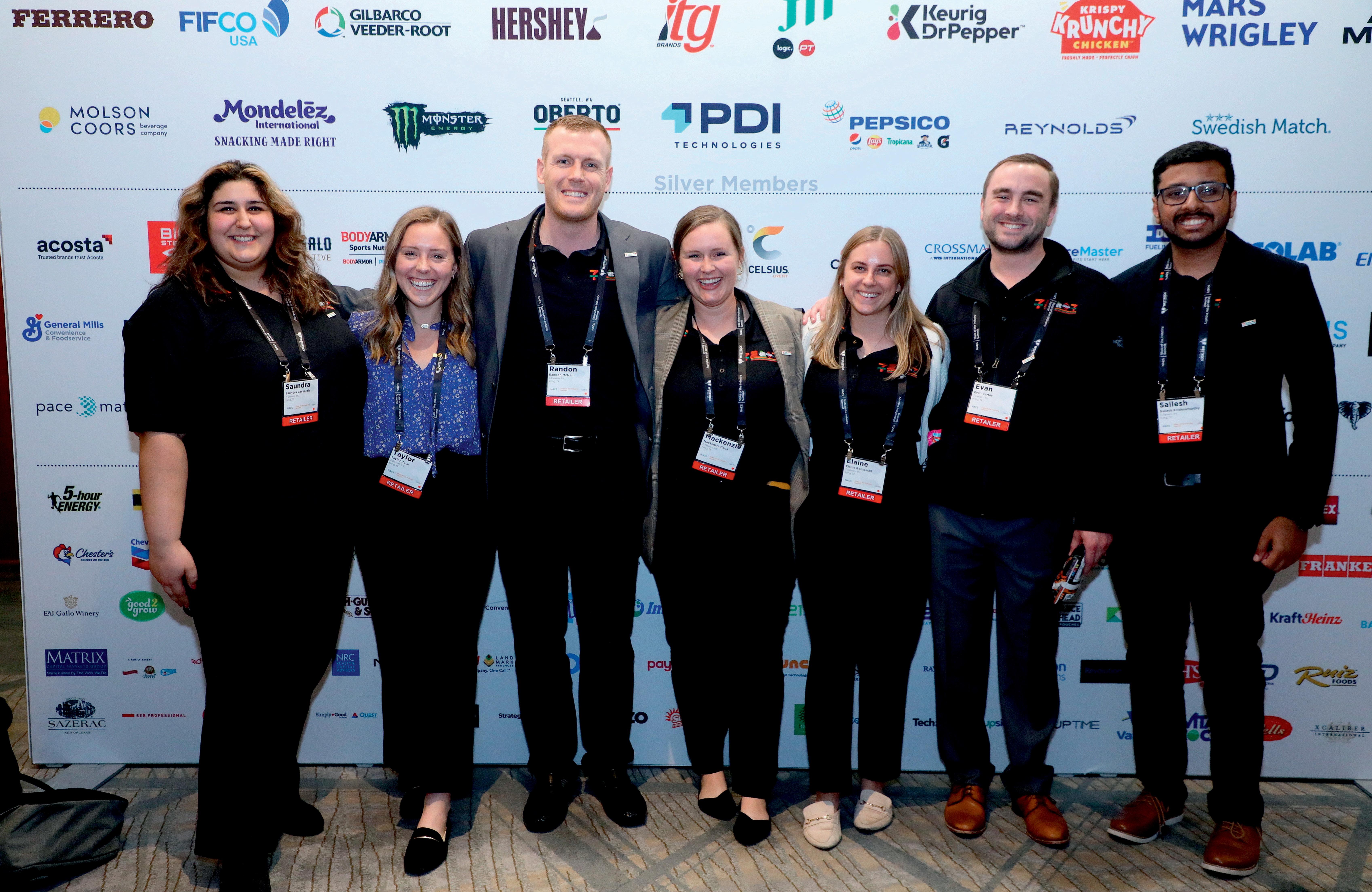
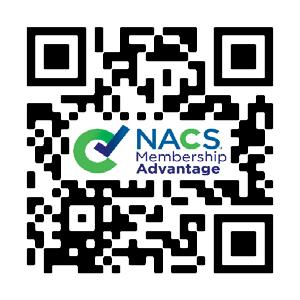
Start with a spreadsheet. For each store, enter data such as sales, age-verified sales, transactions, incident reports, 9-1-1 calls, alarms triggered, shrink and employee turnover rate, as well as information about the area that it’s in, such as CCTV requests. Various sources can offer neighborhood-by-neighborhood crime scores and cameras or alarm systems can track things like gunshots heard in the area.
“Convenience stores are the great public square of society. Everybody goes to convenience stores. You all have a constituency, and if you speak up with one voice, either through your national association or your local state associations, I promise you people like me will listen to you.”
—South Carolina Attorney General Alan Wilson
Customer count is another important metric, and one that can be calculated via AI through your camera system. Davidson shared that stores with a high customer count-to-transaction ratio are most prone to shrink.
You can also add checkboxes for variables like whether a location is open 24 hours, whether it has multiple points of ingress and egress and whether it sells liquor.
There might be pockets of useful information in your organization that you don’t know about. What sort of data does the team that picks locations for new builds use? The
exchange of information can work both ways—the security side should have a voice in analyzing possible sites, and looping loss prevention into discussions around new builds can prevent costly mistakes.
In the same tracking document, add details about the store’s security system. For example: How many cameras does it have, and what kind?
Don’t assume that your store count should be evenly split into tiers, either. If you’re creating four tiers, for example, don’t put a quarter of your stores in each level. The tier system will be used to make decisions, so be intentional and separate out the stores that most need resources. As an example, you might end up with 10% of your stores in the high-risk category, 10% elevated, 40% medium and 40% low.
Once you have your tiers, determine what makes sense for your operation. Guards, physical enhancements like shatterproof glass, better cameras and alarm systems, removing or permanently closing doors, not stocking high-theft items—what is the full toolbox your operation has available? Your high-risk stores may get all the tools, while your elevated-risk stores may get half, and your lowest risk stores only a few.
Skimming has come a long way over the past decade. The techniques and tools thieves use to compromise fuel dispensers and ATMs have evolved significantly, from overlays on keypads to proportional valve tampering.
The challenge for retailers is to know what to look for, said Byron Coleman, manager of asset protection and security at Wawa Inc. “If you don’t think you’ve got a problem, you’ve got a problem,” he said.
He explained that skimmers are overlays placed on top of POS systems, while shimmers, which contain computer chips, are thin metal devices inserted into payment systems to steal
From disruption comes opportunity. At this very moment, the convenience industry is rich with possibility. The key to success? Leaders who can forge a new path. Informed, confident and nuanced leaders are the best asset an organization can have. NACS Executive Education has partnered with world-class, Ivy League institutions — boasting some of the best educators in the world — to provide exclusive education to shape the forward-thinking, determined leaders who will illuminate and seize the opportunities of tomorrow.
convenience.org/NACSExecEd

July 13-18, 2025
The Wharton School University of Pennsylvania Philadelphia, PA
July 20-25, 2025
Kellogg School of Management Northwestern University Evanston, IL
August 3-7, 2025
The Dyson School Cornell University Ithaca, NY
November 2-7, 2025
MIT Sloan School of Management Cambridge, MA
November 9-14, 2025
Yale School of Management New Haven, CT









The NACS Master of Convenience designation acknowledges the leaders from around the globe who have invested in their personal leadership development and attended 3 or more NACS Executive Education Programs. Learn more at convenience.org/NACSMaster
When it comes to skimming, ‘If you don’t think you’ve got a problem, you’ve got a problem.’”
customer data. Shimmers can be difficult to detect with the naked eye. Store employees are advised to gently tug on a card reader, which will often reveal the inserted device. The use of stolen cards is often associated with another crime that is costly to convenience stores: fuel theft. “Think about the loss of revenue that’s associated with this,” said Coleman, adding that fuel pump manipulation can result in a significant loss in fuel sales. “If there’s a 100-gallon volume drop within 15 minutes, then there’s something going on at that location” he said. Here are a few techniques to be aware of:
• Pulser tampering, which involves disconnecting the fuel flow input shaft and reconnecting it to a homemade motorized device with a speed controller. This results in a deceptive flow rate being measured, although the actual flow rate remains unchanged. This crime typically occurs when a dispenser is activated with a gift card or stolen credit card, causing the point of sale/ fuel controller to fail in properly record-
ing the sale. Consequently, a criminal can dispense 200 or more gallons of fuel and drive away without paying anywhere near the full cost.
• Proportional valve tampering, a technique that involves manipulating the proportional valve, which regulates the flow of fuel through the dispenser unit’s internal electrical system. Criminals clamp wires to the proportional valve coil wires and attach them to an external battery, signaling the valve to open and dispense fuel without the sale being recorded on the POS unit. Unfortunately, thieves are good at staying ahead of solutions to thwart their efforts. The takeaway is to be alert, stay on top of how thieves are stealing both cardholder data and fuel, and conduct frequent sweeps of the fuel island.
In 2019, the Retail Industry Leaders Association (RILA) released a report that analyzed the global retail industry’s adoption of Total Retail Loss (TRL), a concept of defining and managing loss within a retail organization. An increasing number of retailers are adopting this comprehensive approach, pioneered by University of Leicester professor Adrian

Hershey, PA






Beck, to managing financial loss across their business.
Casey’s has adopted this concept, explained Mark Stinde, vice president of asset protection at the Ankeny, Iowa-based company, and approaches TRL from both the shrink and overall safety perspective across the business.
Stinde shared some of the strategies and tools that Casey’s uses to reduce losses and improve efficiency throughout the company. “For us, it’s been a real cultural shift,” he said.

track issues like missing deposits and theft.
Initially, the total loss program focused on general merchandise and grocery and later expanded to prepared food, dispensed beverages and safety. Stinde explained that quantifying all loss components in the business was key, along with industry benchmarking and business partner alignment.
Total loss program components he highlighted include:
• Mitigation strategies like deploying an exception reporting tool that uses data analysis to flag spikes in inventory loss/shrink to help identify theft. Stinde explained that Casey’s simultaneously invested in a central investigations team, where several investigators can go out into the field and

• For data reporting, analytics and visualization, Casey’s uses Power BI as its primary solution, replacing Excel almost entirely.
• Implementation of a total loss matrix, which categorizes losses by store and category, as well as performance matrix, which ties back to store operations bonus calculations.
Glenn Master, head of asset protection, security and crisis management at McLane Company, walked through a troubling case of cargo theft, where millions in cigarettes were brazenly stolen from delivery vehicles just as they pulled up to a retail location.
Something to consider if you’re not already doing it: Tabletop exercises that test your organization’s response to a crisis such as a tornado, a wildfire or some other crisis.
Ready.gov defines a tabletop exercise as “discussion-based sessions where team members meet in an informal, classroom setting to discuss their roles during an emergency and their responses to a particular emergency situation. A facilitator guides participants through a discussion of one or more scenarios. The duration of a tabletop exercise depends on the audience, the topic being exercised and the exercise objectives. Many tabletop exercises can be conducted in a few hours, so they are cost-effective tools to validate plans and capabilities.”
April 8-10, 2025
Dallas, TX



The NACS State of the Industry® Summit is the trusted source for convenience benchmarking. The Summit delivers exceptional, precise, and actionable insights that empower you to navigate the fuel and convenience industry with confidence and facilitate strategic decision making.
Visit convenience.org/webinars and click into Hot Topics to see past webinars on safety and loss prevention. Topics covered include being prepared for violence in the workplace, advice for de-escalation and how to build a culture of safety.
Cargo theft refers to the criminal act of stealing goods from a delivery vehicle (i.e., truck or trailer) at a specific location or during delivery. This can involve criminals stealing a few crates of product or the entire trailer itself.
A case study Master shared highlighted the pervasiveness of cargo theft.
The “Oakland Bandits” were an organized retail crime ring specifically targeting cigarette deliveries in northern California, often in broad daylight. Thefts occurred two to three times a week by four to six thieves. In total, they were able to steal over 4.5 million cigarettes.
Given the areas that thieves were targeting, Master noted that the investigation faced challenges due to the involvement of multiple police departments across different cities, which were not initially communicating with each other.
You have to teach law enforcement what [organized fuel theft] is. These are very organized teams that are doing this. A lot of gangs. Their engineering department works fast … but we’ve been able to reduce that shortage and hold that number of the last of years. … We’ve also been capitalizing on any news stories that we can get, and any recognition that can happen. We’ve had good wins there.”
Art
Lazo, vice president of asset protection, 7-Eleven
Trackers were placed in cigarette cartons to trace stolen goods, which led investigators to an apartment complex that they were able to surveil. Investigators followed individuals leaving the complex with large bags of stolen product. One was delivered to the California State Welfare Office, where a social worker was selling stolen cigarettes to welfare recipients as they picked up their welfare checks. The second was to unlicensed smoke shops owned by relatives of one of the suspects. The criminals were also posting on social media, which provided valuable evidence for district attorneys. Eventually the investigation led to the arrest of key players in the crimes and recovery of stolen product.
Master noted that cargo theft spiked 57% in 2023 compared to 2022. The nature of cargo theft has changed, with factors like the ability to resell stolen goods on the internet, the rise of organized retail crime and lack of visibility to the public and in the media about this type of theft. The impact of cargo theft also varies by geographic location, with varying levels of response and communication from law enforcement.
While it’s a significant problem within the convenience store ecosystem, the experts noted personal employee safety always comes first. Just like staying out of a robber or disgruntled customer’s way if they become violent, not engaging with cargo thieves is the smart course of action, said speakers.


Chrissy Blasinsky is the digital and content strategist at NACS. She can be reached at cblasinsky@convenience.org.
Ben Nussbaum is the editorin-chief of NACS Magazine.

Your exclusive source of the most up-to-date compensation data for the convenience industry is now available in an interactive, digital tool.
The Talent Insights Dashboard is the only conveniencespecific HR professional’s guide to industry benchmarks on compensation, benefits, recruitment and retention.
Benchmark against comprehensive, retailer-supplied data to offer differentiated compensation and incentive programs.
Design a competitive strategy to recruit and retain corporate, operations and store-level personnel.
Build high-performing, efficient teams through insights on screening, hiring and training practices from leading retailers.







Gain access! convenience.org/getHRdata

BY MAGNAR MØKKELGARD
FLYERS CAN’T MISS THE CONVENIENCE RETAILER.

If you are traveling to this year’s NACS Convenience Summit Europe, in Copenhagen in May, do not leave the airport before you get a good look at the 7-Eleven business there, which consists of 11 stores and 89 7-Eleven GO vending machines.
he 2025 NACS Convenience Summit Europe will take place from May 26 to 28 in Copenhagen, Denmark. One of the most interesting store operations in the city won’t be part of the store tours, but visitors can stroll through the airport and get a sense of a remarkable c-store success story.
At no other airport in the world is there a bigger number of 7-Eleven outlets than in Copenhagen.
Operated by 7-Eleven licensee Reitan Convenience, there are now 11 7-Eleven stores and 89 7-Eleven vending machines at the airport. It is very hard for passengers not to observe the strong 7-Eleven branding as they move within Copenhagen Airport which is the largest airport in Scandinavia.
So why has Reitan Convenience gained such a strong position here? I met Jesper Østergaard in 2006, the year he became Reitan Convenience’s CEO in Denmark, and asked him to share some facts about this unique operation.
MAGNAR: Can you tell us a little about the last tender for the airport business and how “the 7-Eleven Airport” was born?
JESPER: Reitan Convenience Denmark has taken part in tenders in the airport before, but not won the whole convenience business. This time our appetite for winning was very high, as operating stores in the biggest traffic hubs is the core of our business. The very first airport store that we opened in 2005 was a kind of test. As our strategy has changed since then towards becoming a food destination, the airport became more and more important to us. During recent years, the passenger volume from the low-price airlines has grown, giving us an increased business opportunity, since the service and food onboard these airlines is limited. We are now selling quite a lot of food and drinks for passengers to consume on their flight.
7-Eleven Denmark has earned a unique reputation for your fresh and healthy food offer, transforming the concept of a traditional convenience store selling a few foodservice products into a foodservice destination selling convenience store products. How did this come about?
A: Until 2012, there was a strict regulation of opening hours for retailers in Denmark. Before 2012, convenience stores and gas stations were among the few retailers that could be open 24/7/365. A big part of 7-Eleven’s sales at the time came from groceries, especially on Sundays and bank holidays. Beginning in November 2012, the legislation became more liberal and most grocery stores increased their opening hours and started operating seven days a week. 7-Eleven had to rethink its customer proposition and develop a new strategy.

MAGNAR MØKKELGARD
NACS relationship partner, based in Norway.

JESPER ØSTERGAARD, CEO Reitan Convenience, Denmark
Since then, also customer behavior and needs have changed—magazines, newspapers, books, etc. have declined strongly. However, customers will always be hungry and thirsty. Therefore, our strategy is now built around food, bakery and hot and cold beverages. The strategy change has been a long and challenging process new and different skills were required both in the stores and at the support office.
Back to 2023’s airport tender, what was your basic strategy for the tender?
A: To go from having five stores there to becoming the main convenience operator as well as showing that we could be part of Copenhagen Airport’s goal of becoming the preferred airport in Northern Europe, and that we could contribute more than just paying rent.
Which operational model was the tender based on?
A: In most of Reitan Convenience’s seven countries, the operational model is based on franchising. So is Copenhagen Airport. With 300 full- and part-time employees, 11 stores and 89 vending machines, this is a really big single franchise run by a very experienced franchisee.
Did you create any new concept solutions just for this airport?
A: Yes, the vending solutions were created for the airport. We also introduced a more advanced product range within foodservice. Also, due to the operationally challenging environment that an airport is, we had to work a lot with internal logistics and distribution of products from our warehouse to each location.

Reitan Convenience, part of Reitan Retail, holds a strong position in the Nordic and Baltic countries and is on the leading edge of foodservice-oriented convenience. The operations include the following brands:
7-Eleven in Norway, Sweden and Denmark; YX or Uno-X/7-Eleven gas stations in Norway and Denmark; Narvesen in Norway, Latvia and Lithuania; Pressbyrån in Sweden; R-kioski in Finland; R-kiosk in Estonia; Lietuvos Spauda in Lithuania; Northland in Norway and Caffeine in Latvia, Estonia, Lithuania, Norway and Denmark.
All in all, Reitan Convenience has 1,750 stores. In Denmark
7-Eleven has 179 stores, including 61 at Danish railway stations.
Vending was a brand-new business for you, was it not?
A: In Reitan Convenience, we did not really have any experience in vending. Some 7-Eleven markets (for example Thailand and Japan) had an existing vending business we looked at and got inspired from. Recently, we had also tested unmanned stores with technology from Instant Systems in Sweden. After thorough consideration, we decided to go for the same technology for our vending solution in the tender, focusing heavily on:
• Easy interfaces for the customer
• An attractive product range broader than “just” beverages and chocolate bars
• The ability to adapt the product range locally i.e. to meet different customer needs depending on the departing passengers’ nationality and preferences
• Having a monitoring system that allows close supervision of each machine to avoid sold-out situations
How do you service and replenish the vending machines?
A: A very important strength for us is that the vending is operated by the same franchisee who has the responsibility for the physical stores. This means that the team is closely monitoring the vending machines all over the airport and can react fast to avoid sold-out situations and to make sure that everything looks clean and tidy.

We also developed small electrical vehicles with built-in fridges in order to be able to distribute fresh food around the airport within the very strict rules for health and food safety in Denmark.
There are two really big bookstores in the airport. What can you tell us about these?
A: Newspapers, magazines and books were also a major challenge. This category is still quite big in the Copenhagen Airport. In 7-Eleven nationally, this category has been declining dramatically over the last 10 years. The category was not new to Reitan Convenience … however, the internal knowledge had to be rebuilt. We formed an advisory board consisting of authors and people from that industry. There are now two bookstores in the airport called 7-Eleven Read & Fly.
Have the sales from the vending machines and the new stores lived up to your expectations?
A: Yes, all in all we are delivering in line with our sales expectations. However, vending has more transactions than predicted.
7-Eleven Denmark has been unique with regard to developing your fresh food approach. What is your foodservice strategy at the airport?
A: The food strategy in the airport is, as in the rest of the country, to focus on freshly made, healthier and sustainable choices.
What is the main challenge of operating at an airport?
A: Due to security and challenging access in general, everything is much more complicated in an airport compared to operating stores everywhere else. Building stores, product deliveries, etc. is not easy. And it is costly.
Were there any unforeseen challenges that you had to face after the opening of the new stores and vending machines?
A: Yes, first of all, price increases from the time we submitted the tender until the time we established the stores and vending machines was a challenge. From an operational standpoint we have had a steep learning curve for our vending machines. The technology is sensitive to any kind of movements
and what we did not consider is that the floor in an airport has tiny movements when big planes take off or land, so many adjustments were needed.
Operating more sites on airside [the portion of the airport that can only be accessed after going through a security checkpoint] and selling much more food and bakery than in any other store (apart from at the Copenhagen central railway station) also requires much more planning and detail. In hindsight, we should have allocated more space for production in various parts of the airport.
We will be looking into new ways of producing food and bakery on-site. Our longterm goal is to have a central kitchen, either within the airport or at least very close to it.
What can you say about the sales development?
A: Overall, we are happy to see that Copenhagen Airport is doing great in terms of getting back to its pre-Covid level. The airport is attractive for both passengers and airlines. In the coming years, more and more airlines will be using Copenhagen Airport and the existing airlines are already introducing new routes. From an overall perspective, our 7-Eleven business in the airport is doing well and vending, as a new business area for us, is doing surprisingly well.
Looking forward, can we expect any new developments in this very special retail network?
A: Well, we have learned that vending is not a dead business as long as you have an attractive product range, and you keep high operational standards. We are therefore considering vending opportunities outside the airport. Some vending machines have already been placed in hospitals where we already have physical stores. Copenhagen Airport is building for the future, and as they grow their number of passengers, we also hope to be able to grow together with them.


Do you have any special recommendations regarding what participants in the NACS Convenience Summit Europe or other travelers should look for when arriving at the airport?
A: Apart from our great food stores, have a look at the various vending machines, both airside and landside. In some areas there are only one or two machines while other areas look more like a “vending island” with up to five machines plus coffee. The biggest 7-Eleven Read & Fly, which is near the B-gates at the airside of the main terminal, is definitely worth a visit.
Finally, what makes you most proud when looking at the airport business?
A: I am traveling a lot myself, and every time I either leave or come back home, I get proud when I see our logo all over the airport. On board a flight I very often see other passengers eating our food products—that also makes me very proud.

Build bigger baskets with merchandising strategies that put better-for-you options front and center.
BY LAUREN SHANESY
Hard-boiled eggs, grapes, hummus, cheese, yogurt and packaged sandwiches and salads are all now standard convenience store fare in 2025, and the demand for better-for-you options is only growing.
Forty-five percent of respondents in NACS’ latest Convenience Voices survey said they would shop at convenience stores more frequently if they were offered higher quality and fresher food. Almost 30% of c-store customers said they planned to buy food elsewhere within 30 minutes of leaving the site—10.3% of them cited their reason as being “there are not enough healthy food options available for me at this location,” and 9.8% reported “the food here is not fresh enough.”
“Fresh food is the draw for c-stores now and it’s a trip driver for many customers,” said
Danielle McMiller, vice president of marketing at Structural Concepts, a manufacturer of temperature-controlled display cases. “C-store food selections continue to evolve. As customers seek better-for-you, fresh food options and quality prepared meals, it’s critical that retailers evaluate how they’re merchandising those products.”
Expectations for food are changing, but human nature isn’t. Shoppers looking for healthy grab-and-go food still eat with their eyes, so being strategic about merchandising commissary and fresh food items will lead to more purchases and bigger baskets.
According to a study conducted by Structural Concepts and data consulting company Kantar, customers are 50% more likely to buy items from an open cooler versus a closed-door cooler, while also spending 10% less time (or around 15 seconds less) in front of the open cooler, even when the items in each are the same. In the study, participants also spent $1.23 more (11%) when shopping from an open cooler.
Additionally, in a store with both cooler options, 63% of participants gravitated to the open cooler first. Participants said the open coolers were easy to shop and provided easy access to products as a reason for choosing it first over a doored cooler.
“Central islands and open coolers are visually appealing and can catch customers’ attention more quickly, and also allow customers to look at more product options in less time,” said McMiller. “That can lead to more purchases, especially for the c-store customer who is conscious of time.”
McMiller also encouraged retailers to create a “food wall” that consumers see when they enter the store to immediately capture their attention. Place high-margin items at eye level where consumers will look first to boost their interest in these products.
It’s also critical to avoid empty spaces. “Keeping coolers and shelving well stocked signals to consumers that the food is fresh, which is especially important in the graband-go category,” she added.
An empty cooler or one that’s haphazardly arranged can put customers off. “You have to keep it full with something—even if you are running low on sandwiches and you
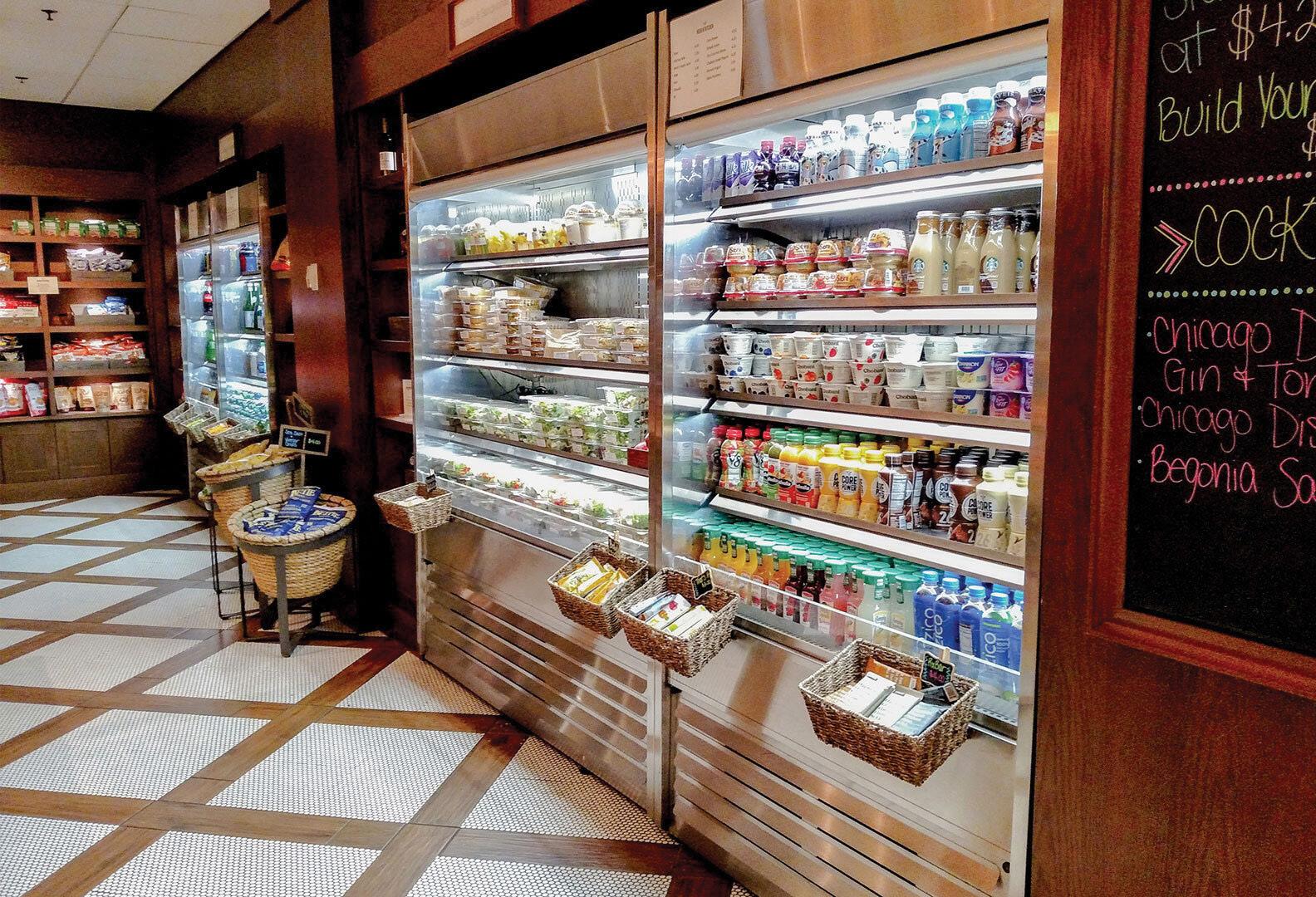
aren’t planning to replace them, you can fill that space with water, for example,” she said. “Cross merchandising can help build baskets by pairing grab-and-go prepared food with complimentary products, such as sides or beverages.”
Using a variety of colors and packaging designs can also create a more dynamic display that’s appealing to customers, McMiller said.
Structural Concepts is focusing attention toward its autonomous checkout equipment, including wall units that allow customers to make purchases at the cooler, similar to a vending machine.
According to data from Structural Concepts, 29% of shoppers would shop at c-stores more frequently if there were more time savings at checkout, and 25% of
c-store shoppers prefer self-checkout, including 39.2% of Gen Z.
Cashierless systems will be critical for retailers with 24-hour operations, especially if their kitchens close during certain hours, as they’ll allow retailers to offer fresh options around the clock.
“With an increasing presence of EV charging, we worked with an operator to
integrate our autonomous retail merchandiser (ARM) to capture sales 24/7,” said McMiller. With 20 to 30 minute charging times, consumers spend more time in the store. During the day when food operations are open, the operator has a full selection of fresh food in traditional service and self-service food displays. After hours, the operator shifts to offer-
ing the same fresh food selections from an ARM to continue the same customer experience in a vending format.
Another direction to consider is AI-monitored smart shelving that can alert employees to inventory running low or items that need to be restocked, which will help save employees’ time and eliminate empty spaces that may inhibit food sales.


“A robust display with colorful packaging that has an intentional design flow is more welcoming, dynamic and shows the consumer that your store and brand is on trend instead of generic. That signaling can help drive loyalty and demand for your products.”
The average convenience store is 3,289 square feet, according to the NACS State of the Industry Report® of 2023 Data. Making the most of that space is paramount.
“It is important to optimize displays from top to bottom—not only inside the display itself but by using the space around it,” said McMiller. “Use the top, use the front, use the sides and every inch of space around the unit so that you’re really drawing in the customer and maximizing the opportunity to sell from more than just the fixture itself.”
Operators can display chips, packaged sweet snacks and other complimentary ambient items that “create a full meal and allow the chance to upsell,” said McMiller. Undercounter coolers also capitalize on underutilized space and create the opportunity for impulse purchases before checkout.
“A customer might make their way straight to the counter for items merchandised behind the counter, where they’ll also find a cooler of drinks or snacks like fresh fruit cups. The coolers allow operators to get the buyer’s attention on the way in and on the way out,” McMiller added.
Undercounter units can be effective in multiple areas of the store, including checkout counters and kitchen or meal prep counters.
Structural Concepts has also seen end cap units, which can drive impulse purchases, be successful with retailers it’s worked with. “We have helped several retailers optimize fresh food sales by placing multiple end cap merchandisers throughout the store to capture impulse sales within different shopping patterns,” said McMiller. “One particular retailer uses one end cap to spotlight its inhouse, fresh-made products and another to offer branded snack items. The coolers are in separate locations, with one being close to the check out to capture last minute purchases.” She also noted that end caps can be good fixtures to utilize for seasonal or event-based promotions or for partnering with CPG brands who can use the space to run their own promotions.
Combination hot and cold storage units also help provide function while saving space, as can units on wheels that can easily be reconfigured as necessary.
“We make sure that our products give operators a footprint that allows them to enter into different foodservice categories, whether it’s hot, cold or ambient, all within their space parameters. Combination cases, for example, are key to that,” said McMiller. “You don’t need to take up a huge amount of space for a display—you can put smaller displays in multiple locations or in key locations where traffic is and maximize your sales. The equipment, when utilized strategically, gives operators the opportunity to provide all kinds of foodservice.”

Structural Concepts has long recognized the growing trend of convenience stores seen as a destination for fresh food by proactively delivering innovative display options that not only blend in with the store format but also offer cost-effective configurable turnkey solutions when merchandising strategies change over time.


This advertorial-style guide of services and packaging appears monthly and is an information-packed tour of ideas and approaches that can change how consumers view your store or choose your brand. It spotlights the newest thinking in convenience and fuel retailing and gives you an advance look at ways of staying in front of industry trends. Products are categorized the same way we organize the Cool New Products Preview Room at the NACS Show each year in October— New Design, New to the Industry, New Flavors, Health & Wellness, Green (EcoFriendly), New Services and New Technology Products are considered “new” this year if they’ve been introduced since October 2024. The products featured here also can be seen in the Cool New Products Discovery Center at www.convenience.org/coolnewproducts
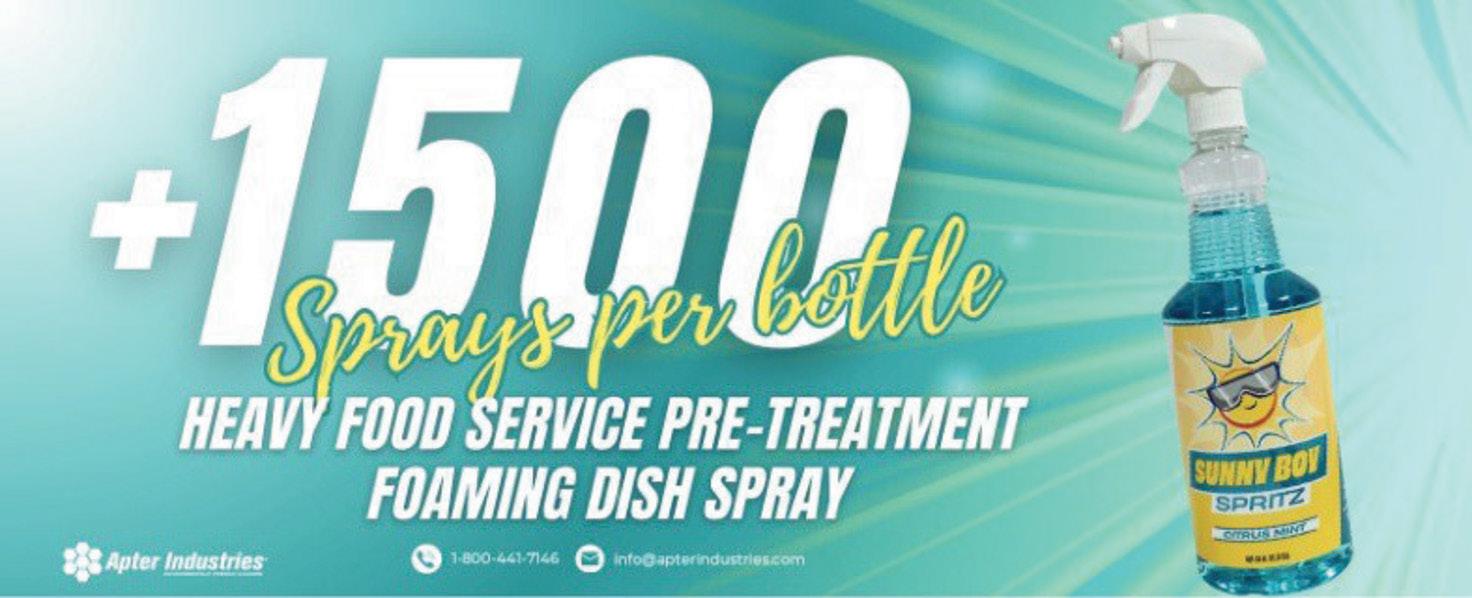

BIC Lighters
BIC Pocket Lighters
America’s Safest and Longest-Lasting Lighter* *vs. Fixed flame, non-refillable lighters of comparable size.

Jbrands
Mike Drops - Red Eye Relief
Mike Red Eye Drops offer instant relief for the dry, high eyes often experienced by cannabis users. Formulated with advanced hydrating technology, these drops quickly soothe and refresh your eyes, helping you see clearly again. Perfect for on-the-go use, Mike Red Eye Drops are the ideal solution for cannabis enthusiasts seeking quick eye relief.

Roller Hot Dog Grill
The revolutionary High Roller Hot Dog Grill’s patented tip-up roller rack offers unobstructed access to the entire stainless-steel cooking surface, making cleanup quick and easy. The roller grill rack features removable roller sleeves that are dishwasher and sink safe for thorough cleaning, providing a cleaner and more appetizing product presentation. Accommodating a wide variety of products, including hot dogs, corn dogs, taquitos, grilled wraps, sausages, and more, it provides fresh and diverse options for customers. Save time and boost sales! Contact Shelly Olesen at 847.616.6901 or visit www.cretors.com. Cretors

and ReadyServe® One Gold Medal Products Co.
Boost your c-store sales with freshly popped popcorn! The ReadyPop® makes serving easy—just push a button, and customers can fill their cups or bags hassle-free. With a 16-oz kettle and 20-gallon cabinet capacity, you can pop ahead and keep up with demand. No time to pop? The ReadyServe® One lets you stock up on Gold Medal’s bulk popcorn. Customize your setup with cashless payment systems and eye-catching branded graphics. Popcorn vending is here—are you ready?
Interested in learning more?
Visit gmpopcorn.com/readyseries or schedule a demo by calling 800-543-0862.
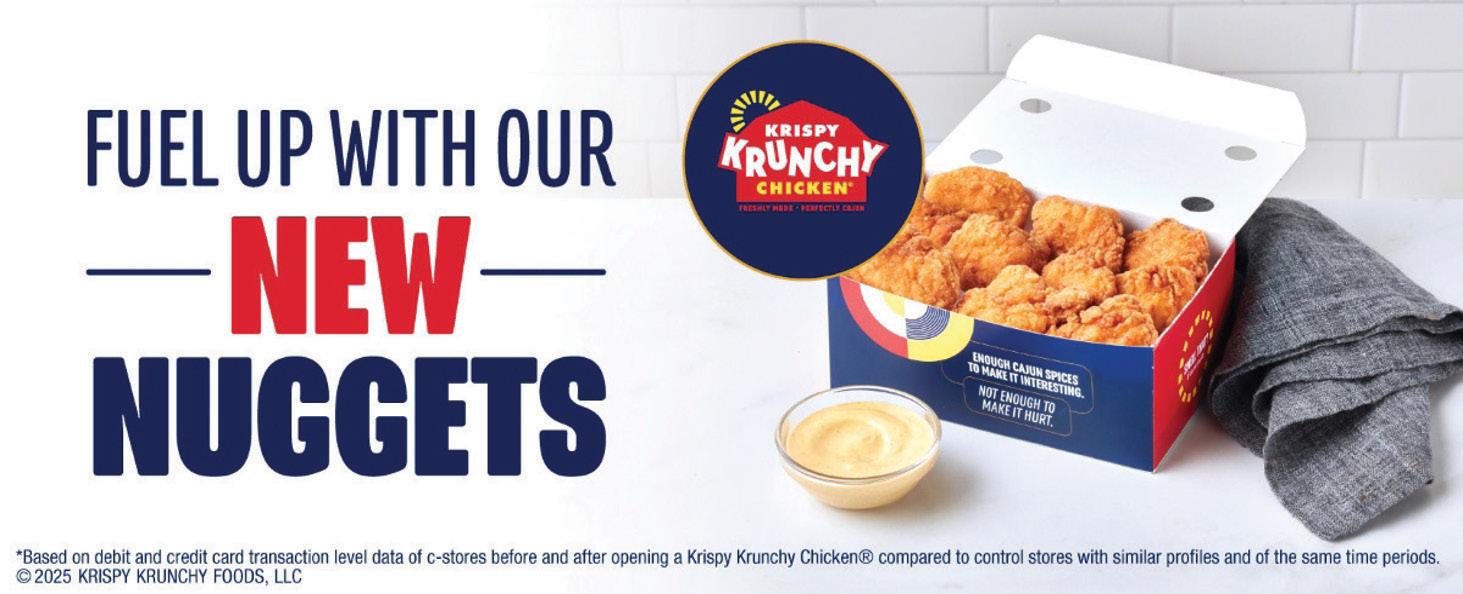
Introducing Krispy Krunchy Chicken’s® new Chicken Nuggets! Made from premium whole-muscle white meat breast, our freezer-to-fryer nuggets are marinated with a proprietary blend of seasonings and fried to a golden brown with special breading. Demonstrated in market tests to grow overall chicken sales, we offer these nuggets as part of our turnkey menu program that features bone-in chicken, tenders, the award-winning Cajun chicken sandwich, mouth-watering sides, and signature honey biscuits. See what you’ve been missing with this incredible foodservice solution and try the new nuggets today!*


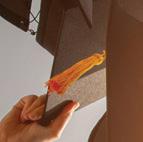
















The NACS Foundation Future Fund awards $3,000 scholarships to convenience store employees and their families. Celebrate hard work, dedication and ambition by helping your rising stars achieve their educational dreams!
Applications are open through Friday, June 13, 2025.









SUBMIT YOUR NOMINATIONS TODAY!
Visit conveniencecares.org/Future-Fund or email Kevin O’Connell, Executive Director, NACS Foundation, koconnell@convenience.org to download the application.
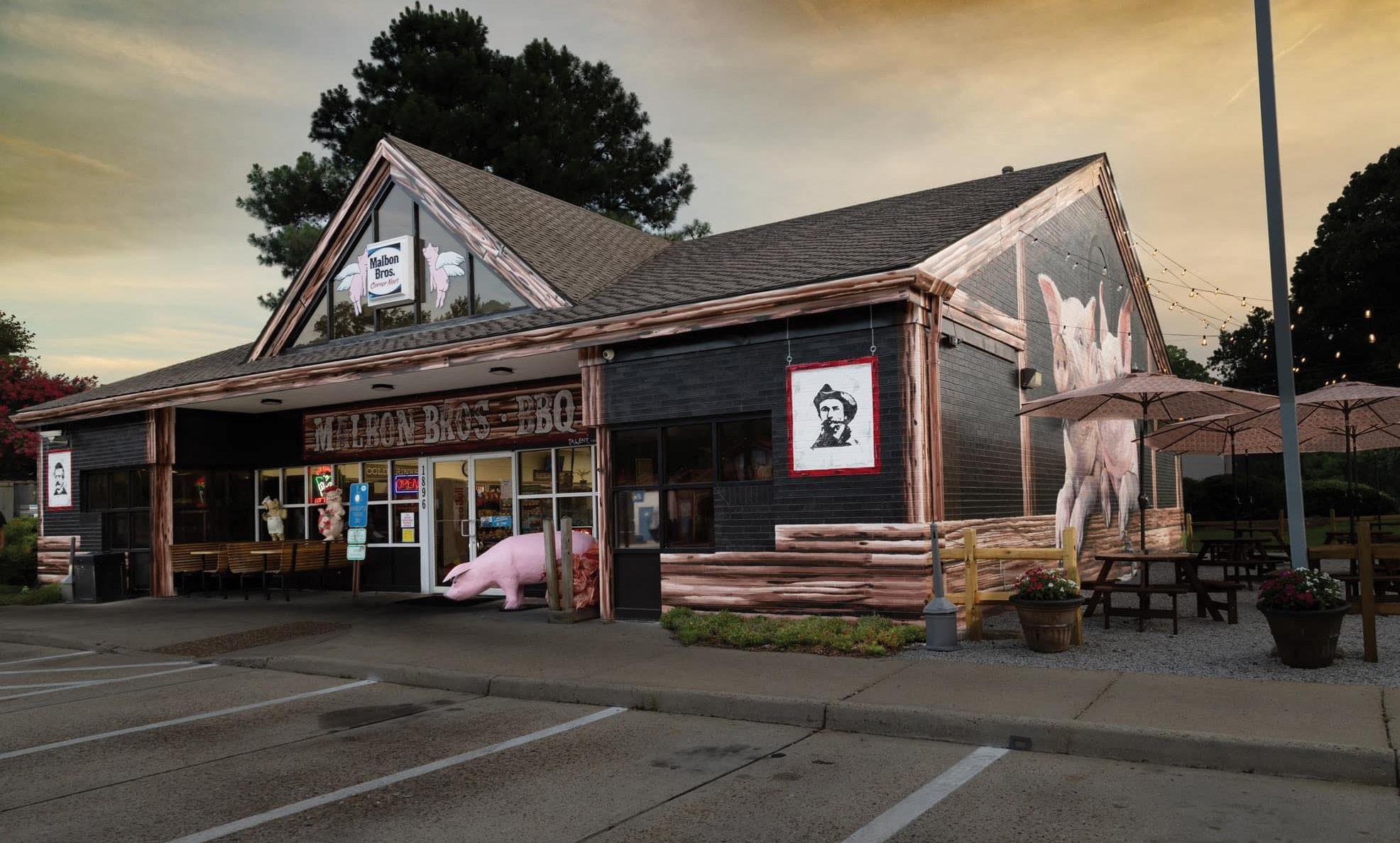

The Malbon brothers turned their childhood hog farm experiences into a thriving c-store catering business.
BY AL HEBERT
Mark and Mike Malbon grew up on one of the largest hog farms in the Virginia Beach, Virginia, area. “We were sending 100,000 hogs a year to market. At one time we had more hogs than residents in Virginia Beach,” Mark Malbon said. “It was the largest hog farm this side of the Mississippi.”
The brothers eventually transitioned to the convenience store business, bringing their experience with whole hog catering (when the entire hog is cooked at once) with them. Their property, which they built in 1995, is named Malbon Bros. BBQ and sells gas, convenience store staples and plenty of barbecue.
As the food business grew, customers wanted the whole hog experience brought to them at weddings, family gatherings and more. The Malbon brothers gave the people what they wanted and a lucrative outside catering business grew out of the c-store.
The brothers have it down to a succulent science. “We do them in hog cookers with propane,” Malbon said. “The cooker is like an old oil drum and we cut it in half, put hinges on it, and add axles and a tongue so it can be attached to a truck and hauled to events. We can cook a 200-pound hog in eight hours.” The brothers also outfitted one of their cookers with wood boxes to offer smoked barbecue.

“When you lift the lid, it’s got a rack and you lay the hog in there, close the lid and light it,” he explained. “Some people cook hogs belly down. We cook them back down; it holds the grease and keeps it moist.”
In their stores, the grab-and-go box has become a customer favorite, Malbon said. “We’ve got barbecued chicken, brisket and ribs.” In addition, Malbon Bros. offers a meal that consists of a pound of barbecue, a half-pound of coleslaw, and four ounces of sauce. “We figure it will make three to four sandwiches,” Malbon said.
The most popular menu item in the store is the Boss Hog. “This is a halfpound of barbecue. The Piglet is four ounces of barbecue and the Top Hot is six ounces of barbecue, with slaw and fries,” Malbon said.
For sides, Malbon Bros. offers mac and cheese, mac salad, potato salad and string beans. “We also make our own coleslaw,” Malbon added. “And we buy cans of beans, and add molasses and cooked pork to it. Our beans and mac and cheese are two of our biggest sellers when it comes to catering.”
If you have great barbecue, you need great sauce—and Malbon Bros. created two signature sauces. “Our best seller is the Billy Sauce. It’s a ketchup-based sauce. The Tilli’s Sauce is a vinegar-based sauce.”
Malbon Bros. was making the sauces in house but ended up unable to keep up with demand. Now, the restaurant has an outside vendor that makes them. Both sauces, along with a store-bought sauce, are at every table.
Great food at a good price, customer service and a sense of fun—Malbon Bros. offers all of this.
In addition to an outside dining area, the store sometimes has a two-piece band come and play. Customers are invited to hang out with their families and play cornhole.
The restaurant will also cook a whole hog and charge customers $9.99 for all-you-can-eat barbecue. “They can come in the store, get a six-pack of beer, sit outside and eat. It’s designed to get people who’ve never eaten here to come inside the store,” Malbon explained. He invites area vendors to come out and sell their products at these events. “Other vendors come out. We don’t charge them. Sometimes, two maybe three vendors show up. This is just to get a variety,” Malbon said. “I’ve found that the more traffic you can put on the lot, the better it is for everyone. Customers can eat barbecue and then have shaved ice from a vendor. Lindy’s Wings comes out. He does a phenomenal job. I advertise it on social media, it doesn’t cost me a penny. People are buying gas, they’re buying stuff in the store.”
“The $9.99 is a loss leader, but sales all go up,” he said, adding, “A lot of people have never seen a whole hog on a cooker and have never watched someone debone it, prep it and serve it. It’s a show.”
Malbon sees being locally owned as a competitive advantage: “We’ve been cooking barbecue for more than 50 years. Me and my brother are here everyday. I know all the customers.”
There’s a feeling of comfort here— the aroma of meat slowly smoking to perfection. It kind of feels like your backyard. Customers have all the advantages of great barbecue, without having to clean up.

Al Hebert is the Gas Station Gourmet, showcasing America’s hidden culinary treasures. Find him at www.GasStationGourmet.com.
CATEGORY CLOSE-UP COLD DISPENSED BEVERAGES
New takes breathe new life into cold dispensed beverages.
BY PAT PAPE

$2,744
The average gross profit dollar contribution of cold dispensed beverages per store, per month.
Source: NACS State of the Industry Report® of 2023 Data
The cold dispensed beverage category includes carbonated, other cold dispensed beverages, non-carbonated, refills, fountain club mugs and sports drinks.
As the c-store industry’s third largest foodservice category, cold dispensed beverages made up 7.5% of foodservice sales in 2023. The category beat NACS’ inflation metric and grew sales by 9.6%, a year-over-year sales dollar increase from $4,836 to $5,301 per store, per month, according to the NACS State of the Industry Report® of 2023 Data.
“Gross profits increased from $2,667 to $2,744, and while gross margins decreased year over year, the category still managed a high margin of 51.76%,” said Emma Tainter, research analyst/writer at NACS.
“According to NACS’ 2023 Convenience Voices study, 41.9% of customers surveyed described their c-store mission as an effort to quench their thirst,” she said. “And they were eager to try different combinations of flavors in their sodas, teas, lemonades and more.”

Get a first look at 2024 data at the NACS State of the Industry Summit, taking place April 8-10 in Dallas, Texas. Register today at www.convenience.org/events/SOI
Among Convenience Voices respondents who visited a c-store based on its product offerings, the quality and availability of fountain or frozen beverages was the third most popular reason (43.5%) for selecting a particular outlet.
“Dispensed and made-to-order cold beverages in a convenience store setting are universally appealing,” said Donna Hood Crecca, principal at Technomic, noting that Technomic data found that 99% of shoppers who purchase c-store beverages do so at least once a month, and 73% do so once a week or more.
$6,440
Source: NACS CSX Convenience Benchmarking Database
CSX, the engine behind category metrics and NACS State of the Industry data, provides current and customizable tools for financial and operational reporting and analysis in the convenience industry. Retailers can measure their company by any of the myriad metrics generated via our live database.
Contact Chris Rapanick at (703) 518–4253 or crapanick@convenience. org for a complimentary executive walkthrough.
“If we look at it by frequency, we see some notable demographic skews,” Crecca said. “The heaviest users—those people who come in once a day, twice a day or a couple days a week—skew younger. The Millennials and Gen Zs are your core, and then there are younger Gen Xers. They tend to come from more diverse backgrounds and are more likely to come from the South and West regions. That makes sense because we are talking about cold beverages in warmer temperatures.”
“Less frequent users—those who come in less often than once a week— skew a little older. They are older Gen Xers and Baby Boomers,” she said. “They’re less diverse, and from a regional perspective, they are more likely to be in the Midwest.”
But no matter the age, background or shopping frequency, all cold dispensed beverage customers have three concerns in common.
“Price, cleanliness of the beverage area and the variety or selection are universally important,” Crecca said. “And the ability to customize comes into

play for the heavier and super heavy cold beverage user—that ability to add a flavor shot or sweetener or maybe to combine different fountain beverages and create their own drink.”
About 40% of the interior real estate at Curby’s Express Market in Lubbock, Texas, is devoted to beverages. The store offers a massive cold tea program featuring 32 flavors of brewed tea—with and without caffeine—and additional

Source: NACS State of the Industry Report ® of 2023 Data

The term “dirty soda” took off in Utah more than 10 years ago when fountain drink aficionados mixed diet soda with coconut syrup, lime juice and half-and-half or coffee creamer. Today, dirty soda describes any traditional soda enhanced with syrups, fruit juices or even candy.
LTOs throughout the year. Hot summer days in Texas bring out tea fans in droves, with the store selling as many as 2,000 units in a 24-hour period.
“This year, we’re expanding our tea program, following the spicy trend and adding local flavors,” said Richard Cashion, chief operating officer at Curby’s, who worked with a “tea monger” to come up with drinks attractive to West Texas consumers. “One will be a prickly pear cactus flavor that we’ve already tested in store.”
In addition, Curby’s sells Zoomies, a hand-crafted drink enhanced with energy powder; Red Bull Refreshers, which marry the popular energy drink with various fruit flavors; and a dirty soda dubbed a Twister.
When these beverages were first introduced, the store relied on baristas to concoct them on request while guests waited. But plans are underway to install a beverage finishing station, allowing customers to be the master of their own refreshment.
“People have asked for that ability, and they want to experiment,” Cashion said. “Because they love to mix and match, we’re getting bubblers that will let them
Recipes with QR codes at the finishing station will help in-store shoppers create their long-time favorites or a totally new drink.
self-serve. Plus, we have a lot of candy, toppings and flavors they can add.”
Recipes with QR codes at the finishing station will help in-store shoppers create their long-time favorites or a totally new drink. Drive-thru customers who know what they want will still receive custom service.
Through the store’s loyalty program, Curby’s learned that the average loyalty customer visits the store 6.5 times a week.


Ice is an opportunity. Maybe its shaved, chewy or cubed, but being strategic about their ice offering can help retailers differentiate themselves.”
“Sometimes they just get a tea for the day, but a lot buy two teas for the day,” Cashion said. “We do one-off specials once a week and notify loyalty members [by email or text] about new products and LTOs twice a month. We try to reward our loyal customer base and not just go after the promotional customer. It’s working for us, and we’re seeing great retention.”
Several decades ago, fountain patrons had one choice of ice for their drinks. It was cold, cubed and helped satisfy the craving for refreshment. Then in 1981, Scotsman Ice Systems introduced the first chewy ice machine, which was soon adopted by the Sonic Drive-In chain. People went wild for the softer, crunchable ice, which contains tiny air pockets in each little pellet.
Today, many fans continue to call the product Sonic ice, while others refer to it as chewy ice, nugget ice, nutty ice, pellet ice or pebble ice.
“Chewy ice takes on the flavor of the drink,” said Jeff Biel, vice president of
There are numerous advantages to having the ice maker on top of the dispenser.
marketing and product development at Scotsman Ice Systems. “C-stores have done a good job of giving people a choice of both chewy and cubed ice. Offering customers a choice of ice is one way of drawing more people in.”
To keep beverage buyers returning, ice must be nice—clean, fresh and visually appealing. Therefore, operators should faithfully maintain their ice machines, which can be challenging in hot climates where the equipment is under added stress and in stores with a robust fresh food program.
“If you’ve got your ice dispenser close to a cooking, frying or baking area, you have contaminants in the air—such as biofilms and microorganisms,” Biel said. “You could get yeast and grease in your ice machine, which could cause a serious health issue. In that situation, cleaning becomes even more important.”
When building or remodeling a location, “Make sure the ice machine is sized appropriately,” he said, adding that the Scotsman website provides a guide for determining the appropriate ice machine for an individual store.
“It used to be that the ice machine was at the back of the house, and someone would transport ice to the beverage dispenser, which often resulted in spilled ice,” he said. “There are numerous advantages to having the ice maker on top of the dispenser, but the dispensers don’t


have a lot of storage. You may need a machine larger than you think, especially now that ice is being used for coffee and other beverages. And don’t forget those customers who like to fill up their Yetis.”
“Coca-Cola Flex powered by our Freestyle beverage dispenser addresses consumer demand for variety by offering over 40 beverage choices within the same footprint as a traditional six-valve fountain dispenser,” said Kevin LeMoyne, president of convenience retail for The Coca-Cola Company North America. “It enhances guest experiences and simplifies operational complexities, incorporating features like PurePour Technology, a 15” HD touchscreen display for smoother navigation and easyto-maintain SmartPAK cartridges.”
Another innovative dispenser is the company’s Micro Matic eight-tap.
I see great opportunities for convenience operators to be the neighborhoodcentric restaurant and store.”
According to Crecca, today’s consumers understand ice, especially those who are of legal age and familiar with cocktails.
“Even those who are younger consider things like ‘How quickly is this ice going to melt?’ and ‘Can I chew on it?’,” she said. “Ice is an opportunity. Maybe its shaved, chewy or cubed, but being strategic about their ice offering can help retailers differentiate themselves.”
QuikTrip knows that customers are picky about ice. “We offer both crushed and cubed ice, and the preferred ice choice varies by region,” said Aisha Jefferson, manager of communications for QuikTrip. “QT provides these options because our customers consistently tell us they like variety, especially with their beverages.”
In addition to new flavors and recipes, retailers of cold beverages have more equipment options. Coca-Cola introduced its original touch-screen Freestyle soda fountain in 2009 and is now launching other equipment possibilities for retailers building or remodeling stores.
“It combines vintage-inspired design with modern functionality, which resonates with Gen Z consumers who appreciate a blend of nostalgia and innovation,” LeMoyne said. “Proprietary technology minimizes CO2 breakout, ensuring superior in-glass carbonation for an exceptional taste experience. The multivalve configuration also expands the range of beverage options, thereby increasing consumer satisfaction.”
For the past two years, QuikTrip has been testing self-serve cold beverage equipment as part of an updated beverage program. It offers a variety of options from all major brands, and customer response has been affirmative.
“If everything goes well, we should have new and exciting fountain, frozen and tea flavors and equipment by mid to late 2025,” said Jefferson.
Staying on top of category trends and new developments is important to satisfying customers.
“Invest in the technology, and by that, I mean, an actual POS system that can help you manage your beverage program,” Curby’s Cashion advised. “We use ECRS Catapult, which gives us recipe management and the analytics we need. It has a food prep and beverage prep function, so we know how many
cups, ingredients and other supplies we need to order. I’m a firm believer in investing in the technology to help control shrink and costs.”
In addition, he is big on sharing information and successes with other retailers, as long as they aren’t direct competitors.
“Figure out what you’re capable of, and if you need to, ask for help. Get in peer groups and talk,” he said. “Don’t let anybody tell you that you’re crazy. A lot of people say, ‘You can’t do that. It’s crazy.’ But you have to take a chance. Don’t go all in; test the waters. Then, build a plan and seek advice.”
“Coming from the grocery industry, I see great opportunities for convenience operators to be the neighborhood-centric restaurant and store, if they take the chance,” he said. “You’ve got to get it out of your head that a hot dog is what everyone wants. Pick something and be good at it.”

Pat Pape worked in the convenience store industry for more than 20 years before becoming a full-time writer. See more of her articles at patpape.wordpress.com.
Contact Information
Altria Group Distribution Company Inside Front Cover AGDCTradeRelations@Altria.com www.altria.com www.tobaccoissues.com
Apter Industries, Inc. 84 (800) 441-7146 www.apterindustries.com
BIC Corporation
www.us.bic.com/en_us

Cool New Products Guide
www.convenience.org/Media/NACS-Magazine/Cool-New-Products
C. Cretors & Company
(847) 616-6900 (800) 228-1885 www.cretors.com
Chester’s International 61 www.chesterschicken.com
CHS Inc. (Cenex) 9 www.cenex.com/chsinc/about-chs
Chyl Brand LLC
(404) 642-4967 www.getchyl.com
DMF Bait Company
www.dmfbait.com Gold Medal Products Company
www.gmpopcorn.com House Autry
www.house-autry.com
Hunt Brothers Pizza
(800) 453-3675 www.huntbrotherspizza.com
Thank you to these advertisers who have demonstrated their support of the convenience and fuel retailing industry by investing in NACS Magazine.
International Dairy Deli Bakery Association 13 (608) 310-5000 www.iddba.org
Jbrands / Bluum Lab 85 www.jbrands1.myshopify.com
Johnsonville Sausage Co. 35 www.johnsonville.com
Krispy Krunchy Foods, LLC 47, 87 www.krispykrunchy.com
Liggett Vector Brands LLC Inside Back Cover (919) 990-3500 www.liggettvectorbrands.com
Mars Wrigley 11 www.mars.com/made-by-mars/mars-wrigley
McLane Company, Inc. 49, Back Cover (254) 771-7500 www.mclaneco.com
Mike’s Hot Honey 21 info@mikeshothoney.com wholesale@mikeshothoney.com www.mikeshothoney.com Monster Energy Company
www.monsterenergy.com
Corporation
www.moosoo.com
NACS Executive Education Programs 67 www.convenience.org/NACSExecEd
NACS Foundation: Future Fund 87 koconnell@convenience.org www.conveniencecares.org/Future-Fund
www.convenience.org/Education/LeadershipforSuccess
Membership Renewal
www.convenience.org/Membership
NACS State of the Industry Summit 2025
www.convenience.org/events/SOI
www.placon.com
Polar King International Inc.
(866) 576-7645 www.polarking.com www.polarleasing.com Premier Manufacturing
(636) 537-6800 www.gopremier.com Stone Gate Foods
(952) 445-1350 www.stonegate-foods.com
Structural Concepts Corporation
(800) 433-9489 www.structuralconcepts.com
(800) 367-3677 www.smna.com
(800) 444-4665 www.triononline.com
Overall, OTP remains in the shadow of cigarettes. According to the NACS State of the Industry Report® of 2023 Data, cigarettes brought in $45,232 per store, per month, while OTP trailed at $16,978 per store, per month. However, while cigarettes fell by 4.2%, OTP increased 6.5% year over year.
NIQ data tells a similar story, with cigarettes accounting for 24.2% of all c-store sales in the United States and OTP 9.9%.
Nationally, NIQ shows that the ratio of cigarette sales to OTP sales is 2.44 to 1.
Regional breakdowns show variations nationally, and also give an indication of the relative popularity of smokeless alternative, a subcategory within OTP that includes nicotine pouches.
Region 1
The Northeast 26.7%
Cigarettes as a percentage of total convenience sales 8.5%
OTP as a percentage of total convenience sales Ratio: 3.14 to 1
The smokeless alternative OTP subcategory is strongest in Region 6, accounting for 31.2% of all OTP sales.
Smokeless alternative makes up 1.8% of all c-store sales nationally (17.9% of the OTP category). It’s weakest, relatively speaking, in Region 2, where it makes up 1.4% of all sales and 12.6% of OTP sales. It’s strongest in Region 6, where it makes up 2.4% of all c-store sales and 31.2% of the OTP category.
Region 4 South Central 20.1%
Cigarettes as a percentage of total convenience sales 9.8%
Region 2
The Southeast, 24.8%
Cigarettes as a percentage of total convenience sales 11.4%
OTP as a percentage of total convenience sales Ratio: 2.18 to 1
Region 3
The Midwest 31.0%
Cigarettes as a percentage of total convenience sales 11.1%
OTP as a percentage of total convenience sales Ratio: 2.79 to 1
Region 5 Central 22.7%
Cigarettes as a percentage of total convenience sales 11.0%
OTP as a percentage of total convenience sales Ratio: 2.06 to 1
Region 6 The West 18.0%
Cigarettes as a percentage of total convenience sales 7.8%
OTP as a percentage of total convenience sales Ratio: 2.05 to 1 Source:
OTP as a percentage of total convenience sales Ratio: 2.31 to 1


